University ofPennsylvania

Summer/Fall1990


Summer/Fall1990
Managing dairy cattle is a cinch. Just givetheherdacresofvegetationandaclean placeto sleep, and use creme-de-la-creme milking equipment, and no problem.
Thereisaproblem,though,bythename of Johne's (pronouncedYo-neeze) disease, causedbyMycobacteriumparatuberculosis,a wasting illness that infects numerous cattle herds in Pennsylvania and throughout the USA and theworld.
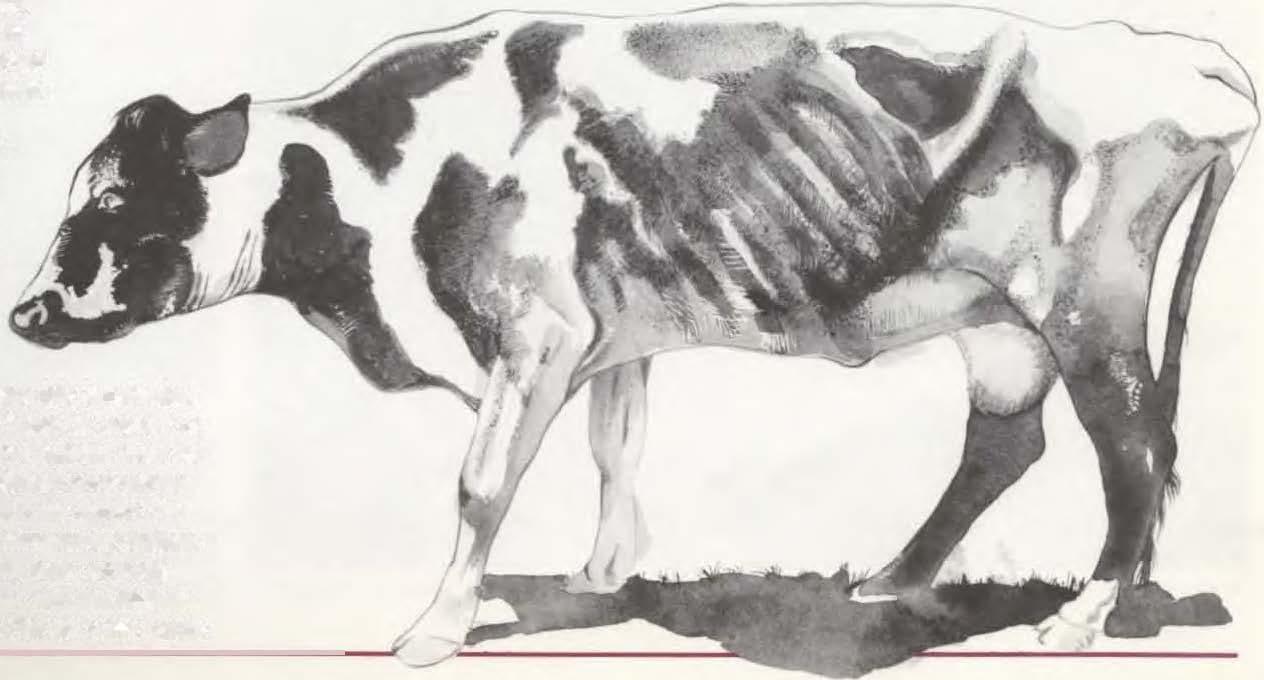
Thegoodnewsisthatpromisingstrides arebeingtakenbyDr.RobertH.Whitlock, MarilynM. SimpsonProfessor of Equine Medicine, and Dr. Raymond W. Sweeney, Assistant Professor of Medicine, at New BoltonCenter.Theyhaveutilizedapowerful culturetestthatisthreetimesmoresensitive than that beingused by most state agriculturalspecialists. Even with the more sensitive test, only25-35% of all infected cattleinaherdwillbedetected on the frrst herd fecal culture test. This test is currently considered the "gold standard•• test and is clearly superior to all currently availableblood or serum tests.Thebadnewsisthat fecal culture testing requires a 12- to J6-week incubationperiod.
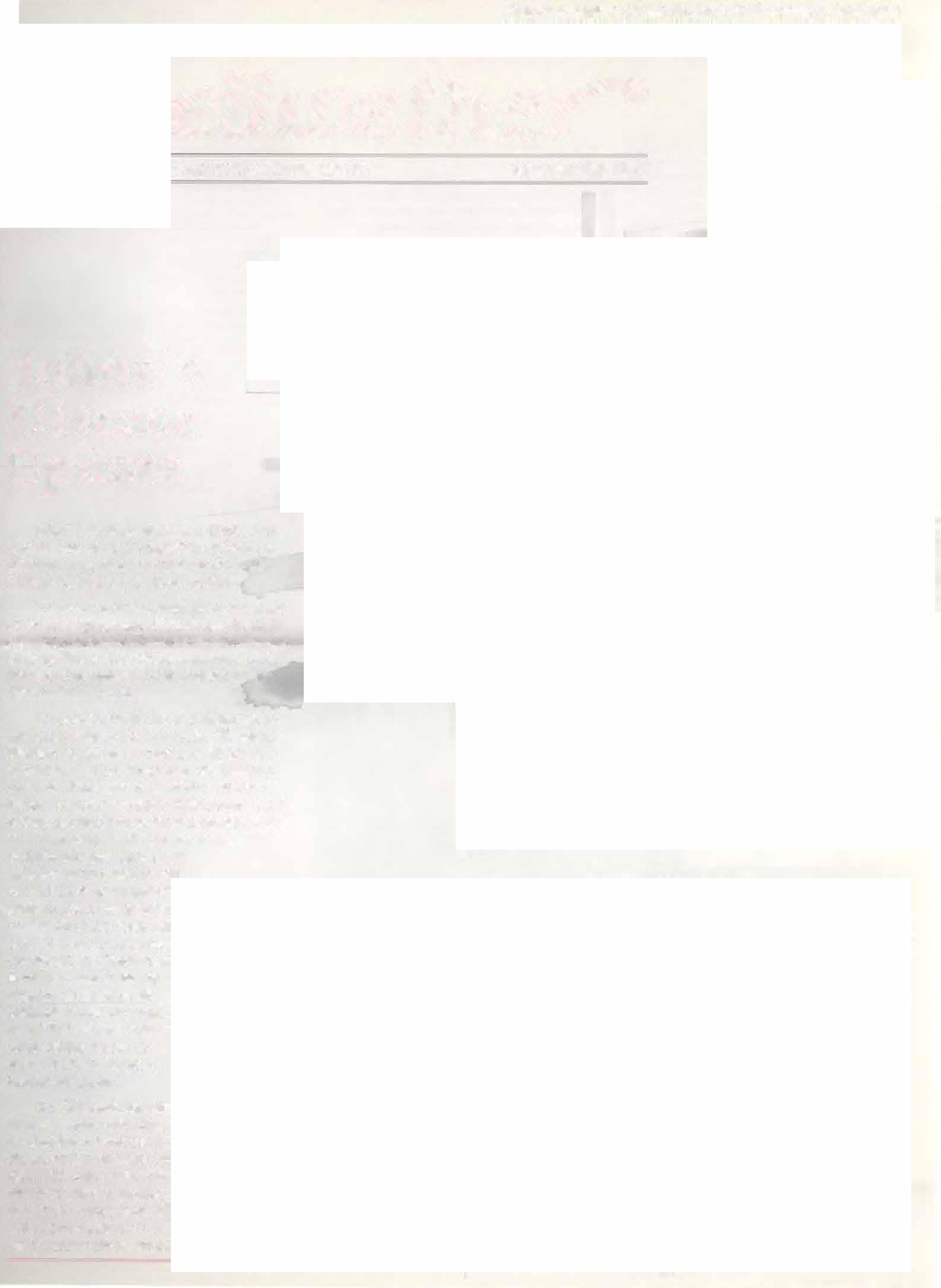
especially calves and should be eliminated from the herd quickly. Cows with lower scores do present a risk to others but can be held in Lhe herd until the farmer is able to seU the animal and obtain a replacement heifer. So farmers have weeks, or severalmonthsbecausetheriskoftransmissionfrom adultcow-to-adultcowisslow."Healsohastensto saythatLhediseaseposesvirtually norisktohumans because it is not thought to be a human pathogen, and because pasteurization kills the organism.
Since Johne's disease is responsible for annual lossesofmorethan$1.5billionfordairyfarmersand severalmilJjonforbeeffarmers, anentireindustryis intently following the work at New Bolton Center. Theeconomiclossesmaycomefromdecreasedmilk production, premature culling genetic losses and increased susceptibility to other diseases.
Dr. Sweeney recently completed a study that indicates the Jobne's organism can be passedfrom cowtofetus. Probably J0percentoflightlyinfected cows, and perhaps 25 percent of heavily infected ones,passonthediseasethroughtheplacentatothe unborncalf.Healsolookedatsamplesofmilkand found that eight to 10 percent of Johne's·positive cowsshedtheorganismintothemille.Calves, which takeinonegallonofmilkeachday,orseveral gallons each week, are thus exposed to the disease through both the placenta and the milk.
Relyingontheseobservations,Dr.Sweeneynow recommends that farmers cull, or separate, calves from the adult herd and provide them with an uncontaminated source of milk, of which milk replacer is one good source. Colostrum should be obtainedfromcuiLUrenegativecowsorcalvescanbe fed a commercially available artificial colostrum.
Atarecentseminarforproducers,veterinarians and agribusiness representatives, Dr. Whitlock explainedthat, byrepeatedcultureandcullinginfected cows,farmers can worktowardobtainingaJohne'sfreeherd.Hedescribesthemanyunusualfeaturesof the disease:
• longincubation:twotoeightyearsfrominfection to onset of clinical signs
• lack of a good diagnostic test to detect early infections
• tendencyforinfectedanimalstoshedmycobacteriayearsbeforetheyshowexternalsignsofdisease
• lack of treatment for infected animals
• availability of a vaccine of marginal value
• theorganism'sabilitytopersistintheenvironment for months
• Lackofcompleteunderstandingoftransmissionof the disease among cattle
• prolonged culture time: 12 to 16 weeks
• tendency for fecal cultures to be contaminated with bacteria and fungi
• unknown role of deer in the transmission of the disease
Diagnosis.Fecalcultureisthemostwidelyaccepted diagnostictest,havingnofalse-positiveresultswhen conductedproperly.Theproblemsarethedifficulty ofhandlingspecimens,the12-to I6-weekincubation period, the contamination of samples, and Lhe lack ofsensitivity:tessthan halfofinfectedanimals may be detected on a single test. By concentratingthe sample.,thePennteamhastripledthesensitivityrate compared to the earlier suspension techniques.

DespiteLheimprovementsinculturesensitivity, though, the major disadvantage remains the prolonged incubation period; in some laboratories, storage capacity is limited for handling large numbers of long-term samples.
So the researchers at New Bolton Center have investigatedmorerapidtests,especiallybloodtests. However no blood or serum tests offer the nearly 100%specificityofthefecalculturetestwhichalso has reasonable sensitivity. Another promising new rest is the DNA probe. Mycobacterial organisms in thetestspecimenarelysedtoreleaseDNA,andthe
double-strandedDNAiscleaved.Enzyme-orradiolabeledDNAsegments knowntohybridizewithM. parowberculosis DNA are added, and tbe labeled, hybridizedsegmentsaredetected. UsingPolymerase ChainReactiontechnology.asmallnumberofDNA segments in the test specimen can be reproduced many-fold, increasing the sensitivity of Lhe test.
Themajoradvantageofthistestisitsspeed:36 to 48 hours, compared to 12 to 16 weeks. It also eliminates the need for viable organisms that will grow in culmre andfor sample decontamination procedures.Thistestmaybecommerciallyavailable in 3-6 months.
Tntosmissioo.Mostoften,Johne'sdiseaseistransmittedwhennewborncalvesconsumemilk,colostrumor feedthathasbeencomarninaredwithmanurecontainingtheJohne'sorganism.Sometimescalvessuckleteats thatarecontaminated.(Evenifthefarmerwashesthe outsideoftheudder,thebacteriamaybelurkinginside theudder.)AUyoungcalves are susceptibletomanure from any infected adult, too.

Although Johne's can be transmitted to animals sixto24monthsoldorolder,thisoccursuncommonly on most farms, Drs. Whitlock and Sweeney believe. Once a calf is infected, it takes several years before clinical signs, primarily weight loss and diarrhea,develop.Thetimelapsebetweeninfection andtheappearanceofclinicalsignsdependsprimarily on two factors:
1. Theageatwhichthecalfwasfirstinfected (newborns are most susceptible) and
2. The dose of organism ingested (a larger dose initiates a faster onset of signs).
1liscommonlybelievedthatafterthefirsttwo years of life, infected animals shed Johne's organismsin theirmanure,andmayshedforyearsbefore exhibiting any clinical symptoms.
This disappointing situation carries its own unhappy consequence: If a "carrier" is sold, the unsuspectingpurchasermaybeblindlyimportingthe pernicious clisease into a previously healthy, clean herd.Dr.Whitlock,arecognizedexpertonJohne's, frequently is asked what farmers should do when buying cattle. His answer is straightforward.
"Check for possible Johne's," he says. "Be especially careful when buying pregnant heifers. Remember:AtleasthalfofherdownerswithJohne's donotrealizetheyhaveir.Therefore,·'Letthebuyer beware."
"Inquire about animals with weight loss or diarrhea,"headvises. ••Asktheseller'sveterinarian toprovidea certificatethat, tothebestofhisorher knowledge, Johne's is not present on the farm of origin.··
Eradication: A case experience. rn 1983 the owners ofaGuernseyherdnoticedweight lossandchronic diarrhea in one animal. Wben their veterinarian's testing revealed the cow was infected with Johne's, theownerssubmittedfecalsamplessoculturescould be obtained on the entire population.

The initial herd testing reported 16 of 42 adult milkingcowshadJohne's.Insubsequenttestsofthe 26initially-negativecattle. 13morewerefoundtobe infected.Dr.Whitlockworkedwiththeowners,who madealong-termcommitmenttoeradicateJohne's fromtheherd.Theownersbeganasemi-annualfecal cultureonallanimalsoversixmonthsofage.They alsoimplementedstrictprocedurestolimitthespread of the organism. Specifica:Jly they:
• disinfectedthematernitystallsbeforeeachcalving
• immediately separated the calves from the dams
• constructed calf hutches and a heifer barn weU separated from the aduJts
• promptly sold animals identified as positive for Johne's
These procedures enabled the dairy farmers ro nearly eliminate the infectionfrom the herd, although nearly 70 percent of the adult cows were infected.Dr.Sweeneyalso recommends thatfarmers withaJohne'ssituationshoulddisposeofmanureon cropland, not pastureland and feed artificial or pasteurizedcolostrumtocalvesparticularlyinheavily infectedherds.
SusanPer/offln June, the Board of 0\erseers voted to restructureitsorgani7.ationandestablishterm� foraU hoard members.Funher, anex-officiocategory was added,and three Iong·srandingboard memberswere accorded cmerirus status. In addition, The Board adoptedby-tawsto govern it<;activitie<.
ThemembersofthecurrentBoardofOverseers arc:

Emtrilus
Mr. H. Richard Diemch
Mrs. Gerard B. Lambert
Mr. WaJter Mannheimcr
Mr. W. B. Dixon Stroud
Mr. Irving G. Zimmerman
aassof1991
Mr. CharlesWolf, Chuirm(rn
Ms. ChristineConnelly, Vice Chairman
M rs. Sarah R. Bogdanovitch
Mr. James H. Higgms
Dr. E. J. Kersting
The calendar .feJlr 1990has been exciting for the University of Pennsylvania, which is celebrating its founding by Benjamin Franklin some250yearsago. Theacademicyearthatjust ended bas been equally exciting for the School of Veterinary Medicine.
We have been fortunate in turning the corner on our fiscal constraints by endiog the year on budget. What made this especially excitiog was our ability to accomplish a balanced budget a full year ahead ol'schedule.
Now our efforts can be turned to the creativeprocess,as therecommendationsfrom our various strategic: plan task forces come forward. Wearenowinapositiontodevotefun attention to the necessary changes and growth that will ensure our foundation of excellence beyond the 1990's.
Already we have launched efforts to improve student affairs, enbROce faculty development, and focus on our unique stnngtbs in
equine sports medicine, aquatic aruma/ medi· cine, bJISicresearch,andzoo andwildlifemedi· cinetonameafew. Trulyexcitingopportunities exist in these and many other areas.
Our curriculum task force is ready to present to the faculty its recommendations for an "acsdemicmajor..curriculum. Theabilityto allowstudentstomarimallytailortheirareasof interestwillparalleltheSchool'sown focuson its strengths.
By this time next year, I will be able to detailforyouourspecificdevelopmentplansto accomplish our programmatic and capital needs.
We continue to appreciate and value the support of our many friends and alumni, and look forward to working with you in this new academic year.
EdwinJ.Andrews.V.M.DMrs. Gwynne McDevill
Dr. W. Edward McGough
Mr. Richard W. Newpher
Class of1992
Ms Henrietta Alexander
Michael L. Browne, Esquire

Mr. Waller F. Goodman
Mr. C. Taylor Marshall
Mr. James M. Moran. Jr.
Mr. Vincent B. Murphy, Jr.
Dr. George Poste
Mr<�. Anne F. Thorington
C or1993
Dr. Roger Caras
Mr. Robert A. Gleason, Jr.
Mr. William S. Gross
Mr. Henry McNeil, Jr.
Mr. William Schawbel
(Ontribution oftheCremeFraicheNursingStationto the Connelly Intensive Care Unit/Graham French Neonatal Section.
The Nursing Station allows observation of all seriouslyillpatientsona24-hou.rbasis.ItJScentral tothenewintensivecarefacility, the fir�t buildingof irs kind designed specifically to meet the special demands of delivery of critical care to seriously ill large animal patients. The neonatal side, accomodatillg up to seven foals and three mares in its dividable five stalls, opened earlier this spring. The six-stalladultintenswecareunitopenedinJune; four of its stalls are connected by monorail to the C. MahlonKlineOrthopedic andRehabilitationCenter, allowing for easy transport of critically ill adult patients.
Mr. Keith Eckel, representing the Pennsylvania Farmers Associauon
Mr. John D. Hoffman, representing the Pennsylvania Poultry Federation
Dean Lamartine F. Hood. representinJZ the CoUege of Agriculture,Pennsylvania State University
Dr. Charles W. Koenig, representing the Pennsylvania Vetermary Medical Association
Mr. William C. Nichol, representing the Pennsylvania Holstein Association
Dr. Michael P. Ratner, representing the Veterinary Medical Alumni Soc1ety
Mr. William Ringler, representing t.he Pennsylvania State Grange
Mr. John Vogel, representing the Pennsylvania Farmer
The Honorable Boyd E. Wolff, representing the Pennsylvania Depanment of Agriculture
CremeFraiche, thewinnerofthe 1985 Belmont Stakes, visited the UniversityofPennsylva.olaSchool ofVeterinaryMedicine'sNewBoltonCentercampus onJune4tounveilaplaquecitingthestakeswinner's
CremeFraiche retired fromracingin 1989after a five season career with 17 wins, 12 seconds, 13 thirds, andwinningsof$4,024,727in64 stans. Heis 1hesixthhighestThoroughbredmoneywinnerofall time,behindAlysheba, JohnHenry,SpendABuck, SundaySilence, andEasyGoer.Thebaygeldingisa
twotime winner oftheJockeyClubGoldCupandof five other Grade I events.
Creme Fraiche is owned by Brushwood Stable, Paoli,PA. Heisenjoyinghisretirementfrom racing and romping in the pastures at the Chester County farm. Periodically�omeofhisfans fromfarandnear stop to visit and to deliver a treat, red and white striped peppermints, to show that they have not forgotten him.
Mr!. J. Muwell Moran a.od Dun Andrews unveil tbe plaque for the Cmne Frakbe Nursing Station as Oeme fralcbe looks on. .• Pb.O. Cftme Fraicbe accepts a ct'lebratory glass or champagne, one ()(bls favorite beverages.Tbt' Thirteenth Annulll Feline Fancien;Sympo')iuar .., beld onMarch31 Bt VHUP. Followingare mmmarit'i of the four presentations.
Dr. Urs Giger, associate professor of medicine nnd medkaJ genetics. dt'lcussed feline blood groups and their clinical impor�ance when treating til cats. Blood group incomp:uibility can lead to neonatal isoer:;throlysis and transfusion reacuons, two lifethreatening condi\ions. But, he pointed out. blood groupsarcnotadisease,rathertheyaregenetically determineddifferencesinantigensonredbloodcells.
Until recently It W<b believed that the great maJorityofcatshadtypeAblood.Nowstudiesatthe Unt"er')ity of Pennsyhania have shown that this is not,o.Or.G1gersaidthat 99.7% oftheDSHtDLH �:tustYJ'ICdacrosstbeUnitedStateshadtypeAblood. Stamcse and related breeds (OrientaJ shorthairs, Burmese) rested also have predominantly type A blood. However. Dr. Giger and his caJh!agues discoveredthatothercatbreedshave a �ignllicantJ�· higher percentage of animals "'ith type B blood.
Breed.. \l.lth about 10-254'1 type B cats are Aby smaan, Birman, Himalayan, Pe�ian, Scouish fold, and Somali ln the British shonhair and the Devon Rex breed1. approximately 50% of the caLs havetypeBblood.Thus.thereisagreatvariationin the:fr.:quencyofbloodtypeAandBbetweenbreeds.
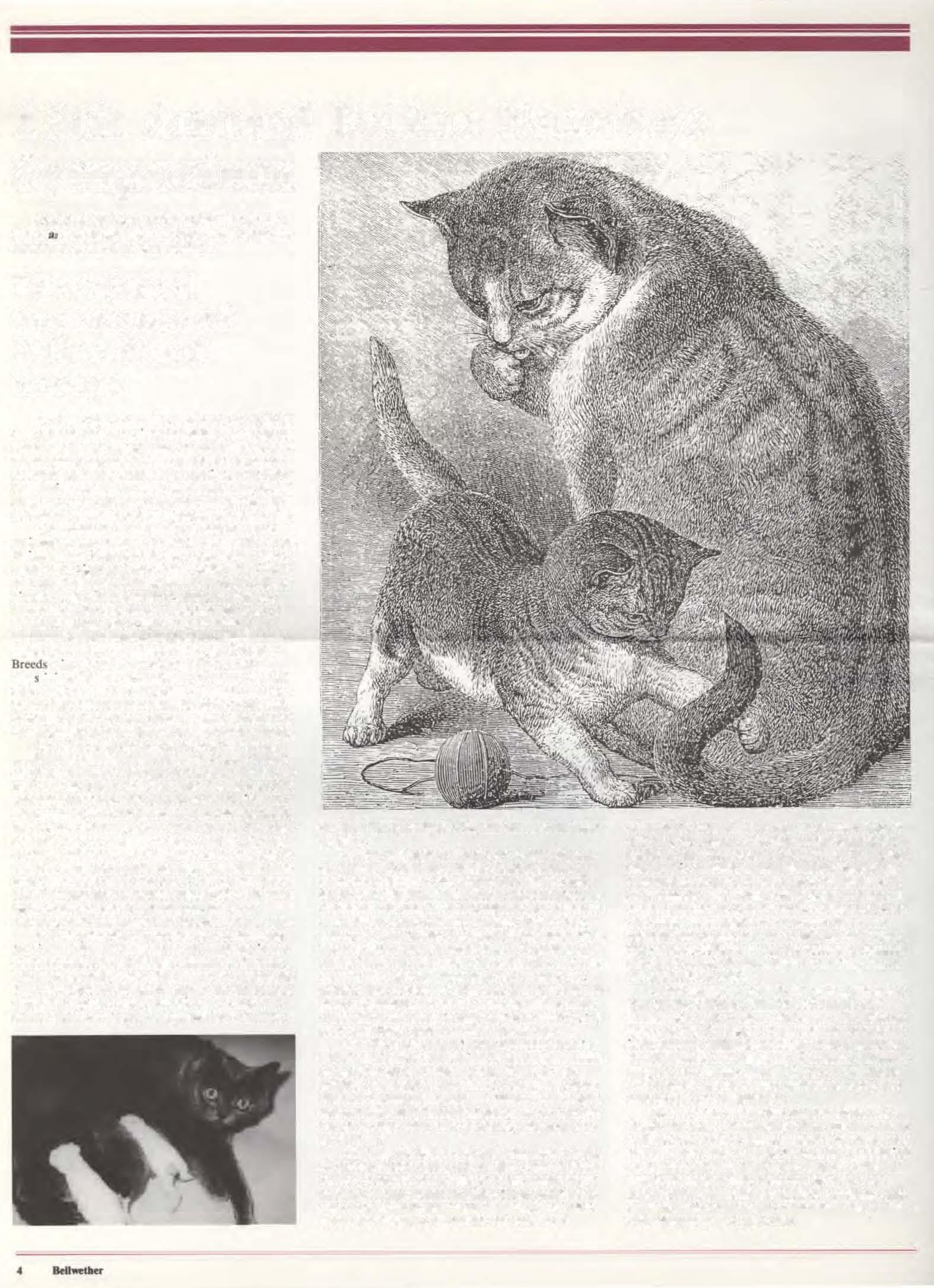
Dr. Giger said that his studies of numerous purebredcatfamilieshaveshownthattypeAandB an�"implyinheritedwithtypeAbeingdominantover type 8. Tbh means thM a all with blood type B is homozygous for B. and type A cats can either be homm�ygous for A or heterozygous, thereby ruding theBgene.OffspringoftwotypeB parentshavetype Bblood.whereasmatingsofrypeAaodBcarsmay producebothcypeAandBkittens.Also,twotypeA -.;:ate; that carry the B gene(het.erozygotes) can have typeAand rarelytypeBkittens.Therearenotype0 cats. Recently the researchers identified a cat with type AB blood, but it appears that this is an extremely rare and separately inherited blood Lype.
Knowing thebloodtype ofafelinepatientcan b.: ol great clinical importance, particuJarly af the animal requires a transfusion. Similar to humans. cats have naturally-occurring antibodies against the other bloodtype;particularlytypeBcatshavestrong antibodies against type A blood cells. These antibodies cause two major incompatibility reactions:
neonatal iseorythrolysis {Nl) and blood transfusion reaction.
KlllenswithtypeAbloodborntotypeBqueen maydevelopafatalNl reactionwhichiscausedby maternal antibodies that destroy the kitten's red bloodcells.Maternalantibodiesdonotpassthrough theplacentaincats, butaretransferredviacolostrum tothekittenduringthefirstfewdaysoflife.These l<iuensarebornhealthybur showclinicalsignswithin hourstodaysaftercolostrumintake.Theyceaseto nurse, fade and most often die within the first few da� of life. Specific signs may not be seen, but include dark red�brown urine and jaund1ce. Nl has been recognized as a major cause of fading kitten syndromeinallbreedshavingmorethan 10% typeB cats, and likely occurs in other breeds too.
Dr. Giger recommends that purebred cats be blood typed prior to breedmg to assure compatible blood types in the breeding pair. If this is not possible,measurescanbetakentosavekittensfrom littersofincompatibleparents.Usingafostermother andremovingtheldttcnsfromthequeenforthefirst coupleofdayswhilesheisproducingcolostrumcan prevem Nl.
Knowingthebloodtypeisalsoimportantincase of serious illness which may require a blood transfusion.Therearemanydiseaseswhichcauseanemia andmayrequiretreatmentwithabloodtransfusion, such as internal hemorrhage, trauma, FeLV infection, and others. If an anemic cat receives a
mismatched transfusion it will notbenefit trom it and may experience a life-threatening transfusion reaction.Sincelhecommonblooddonorshaveblood typeA, itlSdesirabletoknowthebloodtypeofany purebredcatinC"aseitneedsabloodtransfusion.In anemergency,whenbloodtypingisnotavailable,a crossmatch testcanbeperformed.Acrossmatcbtest will detect incompatibilities between donor and recipientblood,butdoesuotspecifythebloodrype. Thecommon fetinedonorattheVeterinDryHospital hastypeAblood.IftypeBbloodisneeded,donors are available at VHUP.
Blood typing is a sjmple laboratory procedure that involve staking a small blood sample: and incubating itwithareagentthatreactswitheitherthe typeAortypeBantigen.Thetransfusionprocedure 1tself involves taking some blood from a peripheral blood vessel of the donor cat. The usual amounr is roughly I112ounc�ofbloodfroma 10-J'Ioundcat. Thisbloodisanticoagulated,placedintoabag,and infused into the recipient cat.
Studies have shown that the transfused red blood cells have a half-hfe of about 35 days in the recipient cat. This is appromnately the s3me as the haJf-lifeoftheeat'sownredbloodcells.TransfusiOn of mismatched blood, however, leads to lysis (red blood cell destruction), followed by heart beat irregularities, transient cessation of breathing, and possiblydeath. Mismatchedtransfusionsareparticularly dangerous in type B cats.
AspartofaTransfusionMedicineAcademic Award.theUniversityofPennsylvania.Schoolof VeterinaryMedicine.offersafelinebloodtyping servicetoallveterinariansandcatbreeden.ApproximatelyIm1ofbloodinalabelledEDTAtubealong withbreed.age,pertjnenthistory,(NTortransfusion reaction,blooddonor}andaddressofcorrespondent .shouldbeshippedbyovernightmailto:Dr.UrsGiger -Bloodtyping,DepartmentofClinicalStudiesVHUP,3850SpruceStteet.Philadelphia,PA 191046010. Resultswillusuallybereportedwithintwo weeksofsendingbloodsample{s),butcanbephoned immediately,ifmedicallyrequired.
Observationandindirectexamination,along withclinicaljudgment,playanimportantrolemthe diagnosisofcongenitalneurologicdiseaseincats. Theveterinarian-asDr.BetsyDayreU-Hart. lecturerinneurology,explained-mustobservethe animat•sbehaviorandresponsetostimuli andthen decideiftheseareappropriate oranindicationof somedeficitor(inrarecases)excessofnerve stimulation.
Veterinarianshavedeveloped listswhichhelp themdeterminetheprobablecauseofagiven symptom,afterdueconsiderationofthe animal's age,medicalhistory,onsetofcondition,andreSl)Ometovarioustreatments.Quiteoften,anapparentlyneurologicalsymp1ommayhaveothercauses. lnaddition,neurologicalconditionscanleadto symptomsthatmaybemistakenlyattributedtosome otherdisease.llinessescanalsogiverisetoneurologicalsymptoms,asinthecaseofa diabeticcatthat suffersfromaneurologicdiseasesecondarily.
Anumberoflaboratorytestscanbeusefulin helpingtoconilrmadiagnosis(andineliminating someconditionsfromthesuspectlist).Theseinclude bloodtests;serumantigenandantibodytests; culturesforbacteria,fungi,andparasites;urinalysis; radiography;electrocardiography; andultrasonography. Afterthese,theveterinarianmaydecideto confirm(oreliminate)asuspectedcausebyfunher tests.Theseincludecerebrospinalfluidanalysis; brainornervebiopsy;myelography(atechniquefor takingx-rayphotographsofthespinalcordby injectingacontrastmedium);nerveconduction veloc1tymeasurements;andserumtestsforvarious neurotoxins,heavymetals,andspecificpathogens. Manyofthesespecific1estsrequiregeneralanesthesia,ootonJybecausetheyarepainful,butbecause it isimportanttokeeptheanimalabsolutelystill.
Fewofthecongenitalneurologicaldiseasesare curable.buttheirdiagnosisisstillimportantbecause �orneapparentlyneurologicaldefectsareinfactdue toviraldisease,rumors,ordietarydeficienciesthat canbetreated.lnothercases,theownermaywantto usethecatforbreedingandgeneticdefectshavetobe ruledout.
Somenemologicaldiseasesareduetodefectsin theclosureoftheneuraltubeduringfetalneurologicaldevelopment.Oneofthesecond.ltionsisspina bifidaindomesticshorthairs;anotherissacrococcygealdysgenesisintheManxcat.Theseconditions, whicharedifficultifnotimpossibletotreat,are presentatbinhandmayprogressintherrrstweeksof life.Botharemarkedbysignsofweaknessinthe hindlegs.andsometimesincontinenceorlossof sensation.Someofthese kittensmayalsohave meningocele,aconditioninwhichpartofthe nervoussystemprotrudesthroughLheskullorspinal column,resultinginconstantdrainageofcere-
brospinalfluid.Theoutwardsignsofthiscondition area..softmushybackbone,.orawetspotatthe baseofthespinalcolumn,justabovethetail.
Spongiformdegenerationofspinalcordcells, whichbasbeenreportedintheEgyptianMau,is manifestedbyweaknessofthehindlegs.The symptomsappeararoundtheageofsevenweeksand sometimesimprove.
Bothmixedbreedandpurebredkittensare sometimesbornwithhydrocephalus,lissencephaly (undevelopedcerebralcortex).oranencephaly{lack ofcerebralcortex). Hydrocephalus.whichcanbe eithercongenitaloracquired,literally"fluidonthe brain, •' hasasooeoftheoutwardsignsadomed skuU. Hydrocephaluscanleadtoveryabnormal behaviorin kittens,some ofwhom maygradually improveorrespondtodrugtherapy.Thecondition cansometimesbetreatedbyafairlycomplic-ated surgicalprocedure.
Himalayansareknowntosufferfrommegaesophagus,aconditionmarkedbyadilated,weak esophagealmusclesheath.Theconditionbecomes manifestattbeageofafewmonthsandcanhavea varietyofcauses,includingfaultyinnervationand myastheniagravis(whichcanbetreated).These animalshavetroubleswallowingtheirfoodand keepingitdown. Theysometimesrecover spontaneously.
Anumberofstoragediseaseshaveneurological symptoms.Thesediseases areultimatelydueto deficiencyofsomeenzyme,oneofthechemicalsthat facilitateschemicalreactionsinthebody'scells. Enzymaticdeficienciescanleadtotheaccumulation ofwastesandothermetabolicbyproductsincells. Somestoragediseasescanbedjagnosedfromtheir symptoms,whileothersrequireanalysisofblood, urine,orcerebrospinalfluid,orothertissues.Some breedsareparticularlySlUCeptibletocertainstorage diseases.Siamesescanhavecerebralsphin80lipidosis,betagalactosedefioency.andmucopolysaccharidosis.GangliosidosisaffectsKorats,wbilePersians sufferfrommannosidosis. Amongtheconditions thatcanafflict domesticshortbairsareceroidlipofuscinosis,hyperchylomicronenrla,globoidceUleukodystrophy,andGM-1 andGM-2gangliosidosis.
Eventhougheachofthesediseasesbasa differentorigin.theyhavemanycommonfeatures. Kittensusuallylooknormalatbirth,butgrowslower thantheirlitter-mates.Signsofdiseasebeginto appearafterafewweeksormonths,andmayinclude peripheralorcentralnervoussystemsymptomssuchastremors,spasms,anddifficuJtyinmoving. Thesesignstendtobeprogressive.
Panleukopeniavirus infectioncanleadtothe binhofkittenswithoutapartofthebrain(the cerebellum).Thisconditionisnotalwaysfatal,and mayevenbeasymptomatic.Thekittensusuallyhave normalstrength,buttheyareveryclumsy,likelyto reachtowardtheirfoodandmissit.Evenso,many ofthesecatswiDadjustandlive.makinggoodpets. Sinc.ethisconditionisnotinherited,theycanbe bred-althoughtheywillmakeclumsymothers.

ObesitYinhumansandfelinesisdefmedthe sameway:catswhoseweightismorethan15%above theidealareclassifiedas"overweight,"whilethose whoseweightismorethan25%abovetheidealare classifiedas''obese"."Nutritionandobesityplayan importantrole in suchclinicalconditionsasfeline centralretinaldegeneration, feline dilatedcardiomyopathy,andfelineurinarysyndrome,"explained Dr. JohnBurr, AnimalCareCenterVeterinarian, TechnicalServices,ThelAMSCompany.
Felineurinarysyndrome(FUS)isthetermfora rathervaguelydefinedgroupofcllnicalsignsand symptomsassociatedwithobstructionsofthelower urinarytraer,morespecificallythebladderand urethra.FUScanoccuratanyageandmalecatsare particularlysusceptiblebecauseoftheanatomyof !heirurinarysystem.Theclinicalsigns include polyuria(unusuallyfrequenturination),obviously painfuJurination,straining.andbloodintheurine (hematuria}.Whenthesesignsarenotduetoinjucy, infection.oroutsidepressureontheurethra(for examplefromatumor),theyareoftenaresultof ureterolithiasis:thepresenceofcalculi(orstones)in theurethra.
Mostofthesestonesconsistofstruvtte,a mineralthatisalsoknownasammoniomagnesium phosphate. AstudyattheUniversityofMinnesota showedthat82%ofurethralstonesincatsconsistof struvite.
Themainpredisposingfactorforsuuvitecrystal fonnationisahighdegreeofurinaryalkalinity, meaningapHwellabove7.0.Otherpredisposing factorsarethepresenceofmicrobesthatproducean enzymecalledurease,andanareaintheurethrathat issuitablefortheaccretionofcrystals.Suggestions thatviralinfections, particularlyherpesvirusinfection,mayplayaroleincrystalformationhavenot beenproven.
Whatdoesseemtohavebeenprovenisthatthe stonesarenotcausedprimarilybydiet,ormore specificallythe magnesium contentofdiet. Some earlierinvestigatorssuggestedthestonesweredueto rughdietarylevelsofmagnesiumoxideandmagnesiumchloride.Morerecentstudieshaveshownthat theamountofmagnesiumoxideisless important thanurinarypHbecausecrystalformationdoesnot beginunlesstheurineisveryalkaline.Themetabolizatiooofmagnesium chloride,meanwhile,causes urinetobecomemoreacidic.
Thesimplestwaytomeasurethe alkalinityof urineisbymeansofthelitmuspapertest. IIis important tokeepacar'surinarypHunder7.0. A pHof6.7orlessisevenbetler_

TryingtoreduceurinacyaJkalinjtybygivingthe catvttaminC(ascorbicacid)isnotadvisable, becausethemetabol.iz.ationofthiscompoundactuallycausesurinetobecomemorealkaline.Some temporaryincreaseinurinaryalka.Jinjtyisanatural resultofthedigestiveprocess.Onewaytoreducethis isbyallowingcatstoeatadlibinsteadofproviding themwitha fewsubstantialmealsaday.
Proteinfromanimalsourcescauses urineto becomeacidicandFUSisrarelyaproblemincats whogetmostoftheirproteinfrommeatandanimal
by-products.Animalproteinsarerichinsulfurcontainingaminoacids,whicharelackinginplantderivedproteins.Animalproteinalsocontains taurine,anaminosulfonicacidnecessaryforthe digestionoffatsandfal-solublevitamins. Humans andsomeanimals.includingdogs,canmanufacture allormostofLhctaurinetheyneedbutthisisnottrue ofcats.CatsaretrUecarnivoreswhichmustdepend ontheirdietforthetaurinetheyrequire.Incats taurinedeficiencycausesfelinedilatedcardiomyopathy(FDC)andfelinecentralretmaldegeneration. Sincetherelationshipbetweentaurinedeficiencyand FDCwasestablishedaboutthreeyearsago,taurine supplementationhasbecomelheruleinthecatfood industry;aUcommercialcatfoodsnowcontain adequateamountsofthiscompound.
FDCisacondition markedbyenlargementof theheartandconsequentdecreaseinbloodpressure. Itsincidenceisnotyetknown;itssymptomsinclude overallweaknessandobstructionofbloodOowtothe backlegs.Fortunatelythisconditionincatscanbe treatedsuccessfuUywithtaurinedietarysupplements, asb.asbeendemonsuatcdbydramaticseriesofchest radiographsshowinghowapreviouslyenlargedheart returnstonormalsize.Alaboratorytestforblood le-.elsoftaurineisavailable.Taurinedeficiencyhas alsobeenimplicatedinfelinecentralretinaldegeneration.wh.ichleadstoirreversibleblindness.This conditiondevelopsgradually,owingtothevariable taurinecontentofdifferentfoodsandthelongserum half-lifeoftaurine(from30to88days).Retinal degenerationisseldomdiagnoseduntilthecathas lostitseyesight.Ponunatelyitsprogressioncanbe halted-allhoughnotreversed-byachangeindiet.
TheNationalResearchCouncilhasrecommendedadailyallowanceofatleast400unitsoftaurinea daytoprevent felineretinaldegeneration,witha minimumofSOOunitsforpregnantqueens.The amountneededforpreventionofFDCissubstantiallylarger,inlheneighborhoodof2,500unitsaday.
Medicalapproachestohepaticandrespiratory problemsincatsfonnedthesubjectdiscussedbyDr. JoanC.Hendricks,assistantprofessorofmedicine. Shenotedthattaldngagoodmedicalhistoryfrom theownersisakeyelementintheaccuratediagnosis ofbothconditions.
Catscansufferfromanumberofliverconditions.Atpresent.thereisnocureforlivercancer. Thesituationismorehopefulinregardtothe metabolic liverdiseaseswhosesymptomsinclucle jaundice(alsoknownasicterus).Thisisusually manifestedby"yellowness,"ordiscolorationofthe eat'sgums,eyes,andmucousmembranes.
ThelivercanbecharacteTizedasametabolic factorythatprocessesmanydifferentsubstances, makingsomeorthemandbreakingdownothers.Itis themaJororganfordegradingpoisonsanddrugs,as wellasmanyofthewasteproductsresultingfrom normalmetabolism.
Jaundiceisamajorsignofliverdisease.ltis causedbythetissuebuild�upofbile,oneofthetiver productsthatplaysanimportantroleindigestion.
Thebuild-upofwasteproductsthatarenormallyprocessedbythelivercanleadtoothersymptoms. suchasdementiaandseizures.Theneurological changesassociatedwithLiverdiseaseareusually
globalinnature.Thecatmaystandandstareintoa comer-orrefusetoplayorrespond.Lackof appetite,nausea,and'olomitingareotherpossible symptomsofliverdisease.Finally,liverdiseasecan leadtoabnormalbleedingbecausetheliverisnot producingsufficientamountsofavarietyofclotting factors.Anotherconsequencemaybeleakageof serumthroughthe:wallsofbloodvessels,causing edemabecausetheliversnotmakingalbumin,a proteinthatmakesbloodthicker.Edemaandabnormalbleedingareusuallysignsofadvanceddisease.
Thereareanumberoflaboratoryteststhatcan establishthepresenceofmetabolicliverdisease beforeithasreachedthisstage.Manyoftheseare similartothetestsusedinhumanpatients.Nonetheless,liverbiopsy-removalofabitoftissue-isthe mostdeftnitivemeans10establishLbediagnosisof manyconditions.Thisisusuallydonebymeansofa needle,undergeneralaoes�hesia,andoftenunder uJtrasonographicguidance.
lnsomecasesitmaybenecessarytogivethecat abloodtransfusion,aswellasnutritionalsuppon. beforesubjecringittosuchaprocedure.Nmritional supportismo£teffectivelyprovidedbymeansofa nasogastrictube.Thismethodhasmanyadvantages: itdoesnotrequireanincisionandcanbeusedat hometfthecat�amstotolerateit(asmanycarsdo).
Therespiratorysystemcanbecharacterizedasa mechanismthatprovidesthebodycellswithoxygen andremovescarbondioxide,themajorwasteproductofnormalmetabolism.Thesamesystemisalso usedforotherpurposes,suchasvocalizationand regulationofbodytemperature.
Thesystembeginswiththewindpipe,whichis reallyaconductingtube.Tbewindpipeleadstothe lungs,wherethemaintubesbranchoffintobronchi, small--diametertubesthatleadtolungcellswheregas exchangetakesplace.Theentiresystemiscontrolled byamuscularpump,thediaphragm,whichisunder verycloseneurologicalcontrolandcannotfunction automaticallylikethehean.
Wbenthelungsorthepumpingmechanism beginstofail,theconsequencesarelikelytobe sudden,acute,andlife-threatening.lnmanycases,it maybepossibletoprovidemechanicaJcompensation.butusuallytherehlilliethatcanbedoneabout theunderlyingcondJtion.Manyoftheseanimalsdie beforeanyonecanhelpthem.
Veterinariansaremorelikelytobeabletobelp inthecaseofdiseasesthataffecttheairway.These conditionsarerathercommonandtendtobemarked byallsonsof..funnynoises..thatarereallycoughs andsnee7�.C.acsmakecnu&hingqouodsthatare
distinguishablefromgagging,retching,and vomiting.
Coughsngisusuallyduetolocalirritationor inflammationoftheairway-inaway,noLunlikelhe bronchitisseeninchronicsmokers.TheonseLisoften gradualandtheconditionmaybelongterm,ranging inseverityfromaminorirritationtoanaffliction thaLisvinuallydisabling,althoughgenerallynot life-threatening.(Incidentally,itremainsunclear f animalssufferasaresultoftheirowners'smoking.)
Diagnosisofarespiratoryconditionstartswitha verythoroughphysicalexaminationandhistory.The importantquestionsare:Isbefibbingorturning blue?lsbemakingwhistlingnoises,orcoughing,or gagging?Measuringtbelevelsofoxygenandcarbon dioxideintheanimal'sbloodcanprovideuseful information.Therearemethodsofdoingthiswithoutdrawinganyblood,bymeansofaclipattached totheeat'searthatanalyzesbloodgasconcentrationsfromthecoloroftheblood.
Aflerthat,radiographycanbeveryuseful� becauseitactuallyprovidesalookattheeat's airwaysandlungs:itmayalsobeusefultotakea sampleoffluidfromtheairwaytocultureand examinethecells.
Endoscopyasanotherusefuldiagnosticmethod. Thisinvolvespassingathintube,withacameraand lightsourceonitstip,downtheairwayforanactual look.
Jan KangilaskiTheF01.111a!DthAnnualFelineFaodersSympowmwillbehddAprilU,1991attheVeterinary H�ortheUniversityofPennsytvaniain Philadelphia.
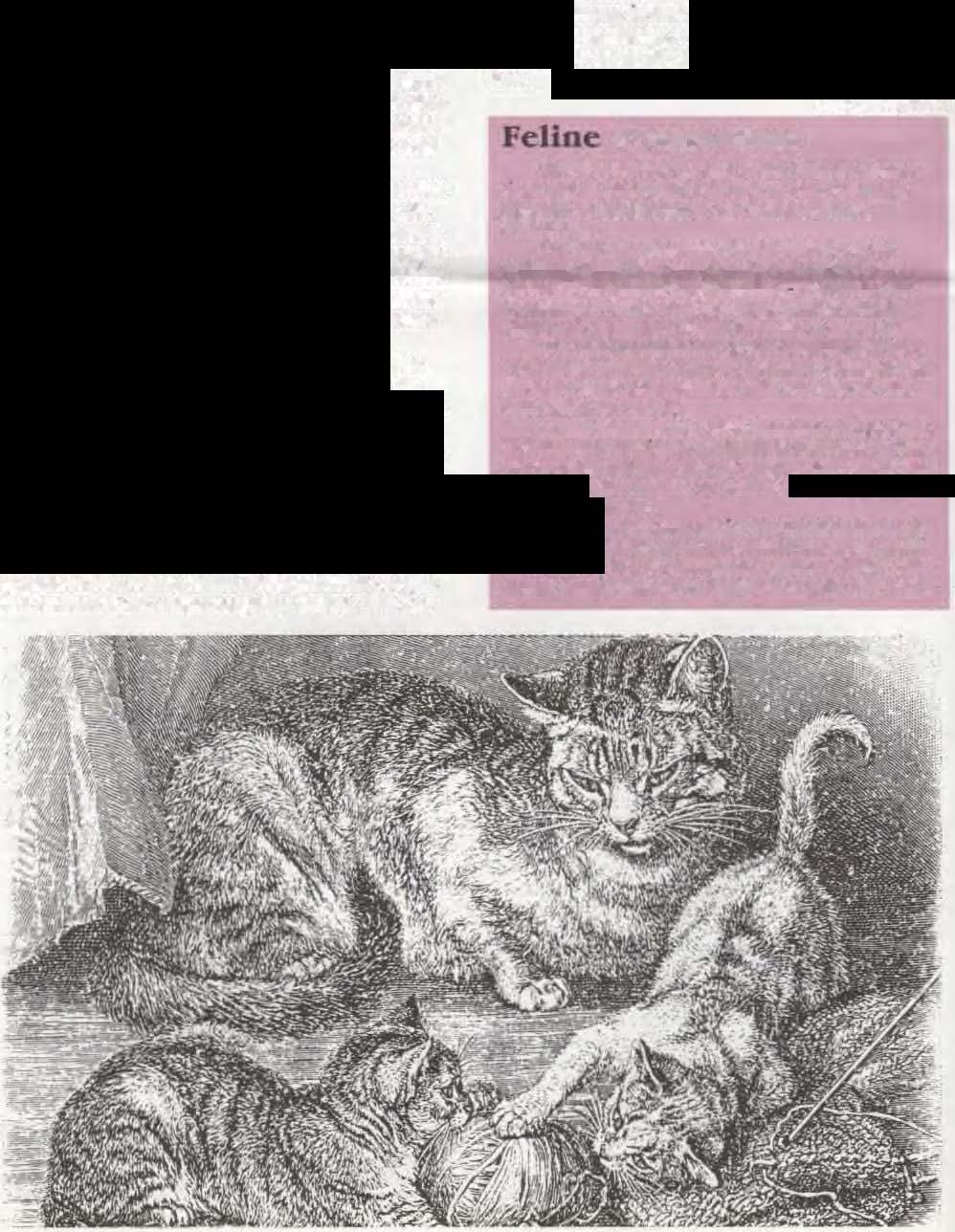

1Mday·loqpropambqini9:30a.m.Ms.
Attxhmcnt-PesLou."Dr.KarenKuhl,a� loPt,willtpealcoa"'FelineReactionPananl.'1
Thefinl1praadlltioaoftheDJ0r11iaswiDbea "'ParadeofBreeds"andMr.RktwdGebbardlwiD Wuw.cbreedct.anc.cnsuc:swilhlhehelpofcats fromdiffcn:mcbrftdt.
InlhcafteraoonDr.MarkSaiandaiwiUspeak.,oo ··�a.,....otAbdominalDilonkrs."This willbefotlowedbyatoworVHUP.andawiDeIIJid cbcaerer:epllon.boltedbyMrl. ll.V. Cllrlc,Jr•• aad Mn.EditbYiM)I.
1beC��.Worttae:Pl'otJMD•S4s.1"baiocludesJund1 imd.-ow.Ranaiiolll.eRqUindandCll1bemade byoonrxtJaaDr.M JORptuncDeubler,VHUP,38SO SpruceStrecl.PIUL,PA 19104,TeL:(21'.)898-8862.
Thediuretit-furosemide,commonlyadministeredtoracehorseswhosufferfrom"bleeding.''a disorderknownasexercise-inducedpulmonary hemorrhage(EIPH),improvestheracingperformanceofhorseswhodonotsufferfromthedisorder,a newstudyhasshown.
Thestudy,ther1rsttotesttheeffectoffurosemideontheperformanceofnon-bleeders, was published inthe May 1990issueoftheAmerican JournalofVeterinaryResearch.llwasconductedby UniversityofPennsylvaniaveterinariansCorinne RapbeJSweeney, LawrenceR. SomaandAbbyD. Maxson.OthermembersofthePennresearchteam wereJosephE.Thompson,SusanJ.Holcombeand PamelaA.Spencer.Theproject, whichwasconductedatthePhiladelphiaParkRacetrackdunngthe 1988-89racingseason.was fundedbyTheJockey Club.
TheresearcberJ>adminjsteredfurosemide,widely-knownbythetradenameLasix,to79 Thoroughbredracehorsesforasingleraceafterr1rst determiningthattheydidnotsufferfromElPH. Performanceinthatracewascomparedtothe horses'performanceintwootherracesrunwithout thedrug.
ThestudyfoundthatthehorseswithoutEIPH racedanaverageof0.48seconds,or2.4lengths fasterforaone-mileracewhengivenfurosemide. Geldingsshowedthegreatestimprovementinracing timewltiJeonthedrug,averaging 1.08seconds, or 5.4lengthsfaster.
Theaverageimprovementinracingtimeswhile onfurosemide forfemaleThoroughbredswas.42
seconds,or2.1lengthsforaonemilerace;thegroup ofcoltsstudiedsbowedminimalimprovementin performance-lessthanone-haJflength-whileon themedication.Theresearchersfeltthatthedifferencein improvement among thesexgroupswas relatedoottogenderbutmorelikelytoagebecause thegeldingswere,ontheaverage, older.
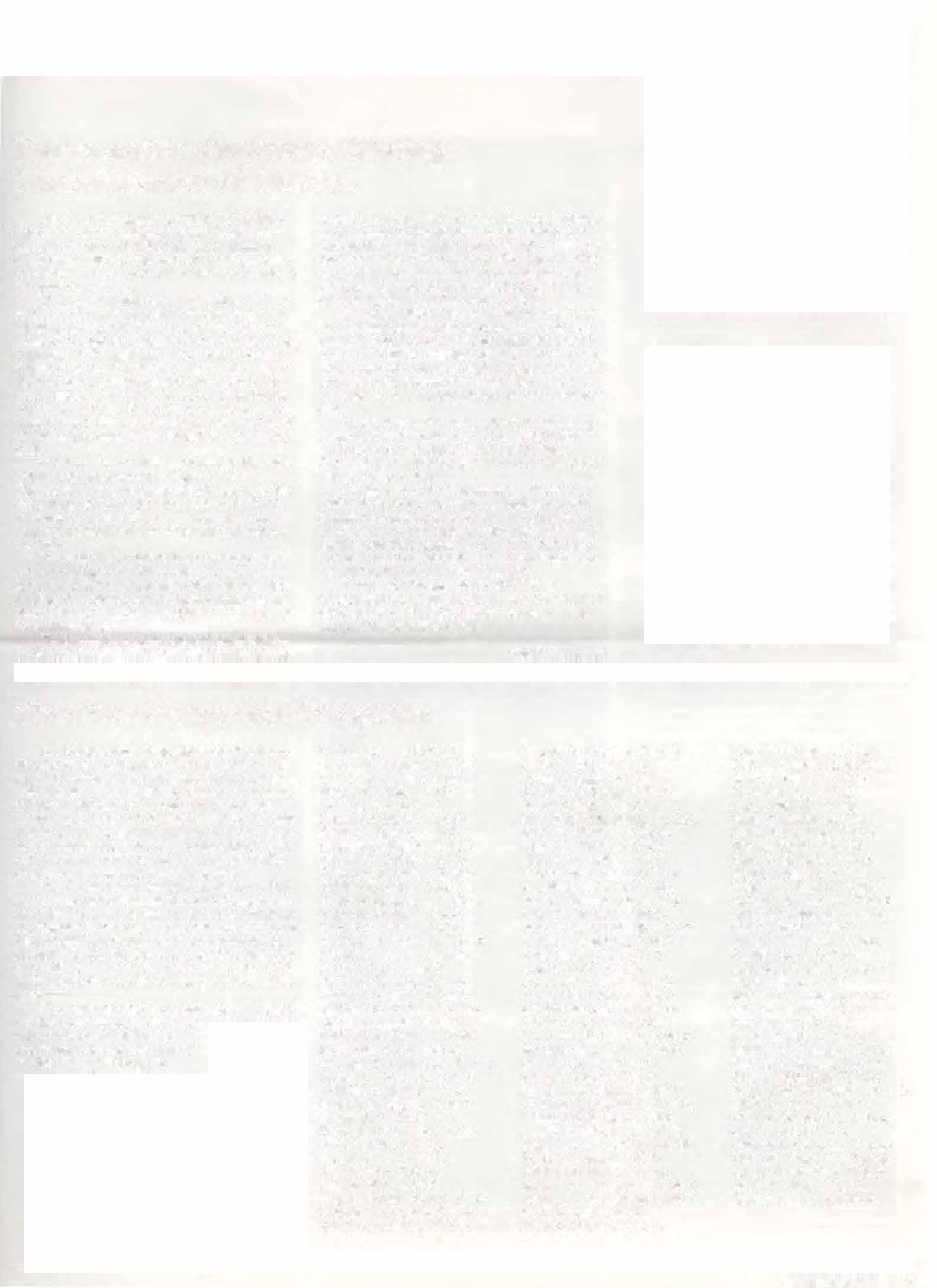
Thegroupalsoexaminedtheeffectsofthedrug ontheracingperformanceof52bleeders.Thestudy foundthatthedrugimprovedtheracingtimeofthe horses with EIPH, althoughtheimprovement was .26seconds.or1.3lengths.Geldingsimprovedby.56 seconds,or2.81engtbs;femalesby0.23seconds,or 1.21engths;andcoltsshowednoimprovementinrace time.
Inthecourseofthestudy,thePennresearchers foundthatthedrugfailedtostopbleedingin32(62 percent)of52bleederstreated withthedrug. Furosemidealsofailedtopreventthedevelopmentof bleedingafterracing.
Racingtimes forthepopulationofhorsesat PhiladelphlaParkindicatedone-fifthofasecond equalled t.4lengthsatone mile. Theequationof one-fifthofasecondequalsonelength, whilenot accurateforallpopulations,isusedtraditionally. Forthat reasonalltheaforementioned lengthsare reported usingthistraditionalequation.
BecauseoftheprevalenceofEIPHin Thoroughbreds,nearly700horseshadtobescreened forthestudytoidentify79horsesthatwerefreeof thedisorderafterthreeraces.
 PhyllisHoltunan
PhyllisHoltunan
ThePetMemorialProgramattheVeterinary HospitaloftheUniversityofPennsylvaruaissupportedbyveterinarianswhothoughtfullydonate monetarygiftstotheVeterinarySchool ''inmemory of" petswhichbad tobeeuthanized.Although euthanuiaisasadanddifficu1tsiluation. thepain maybelessenedbytheknowledgethattheveterinarianunderstandsandsharessomeoftheowner'sgrief andthatpetmemorialdonationsareusedbyVHUP tofurtherteachingandserviceprograms.
ThePetMemorial Programbasbeengaining momentumsinceitsinceptionin 1982.Comparedto lastyear,forexample,thenumberofveterinarians participatingintheProgrambasincreasedfrom90to 106andgiftshavebeenreceivedfromveterinarians practicingin 18 differentstates(upthreefrom last year).Thedollartotaldonatedinfiscalyear 19891990was$12,876,an18%increaseovertheprevious yearI
Wewouldliketakethisopportunitytowelcome anynewpanicjpantstotbeprogramand extend ourgratitudetothefollowing veterinariansfortheir supportof tltePet Memorial Program:
Fred R. Adams, D.V.M.
JaniceM.Andrews, D.V.M.
LoyC. Awkerman.V.M.D.
FredricK.Baff, V.M.D.
CurtBarnett, D.V.M.
Richard J.Baron, V.M.D.
FrankA. Bartus. V.M.D.
MicbeUeC. Banus,V.M.D.
Michele B. Belisle, V.M.D.
RobenL.Bergman, V.M.D.
WilliamE.Best, V.M.D.
ClaireE. Blanchard. V.M.D.
FrankA. Borzio, V.M.D.
HarveyA. Braaf, V.M.D.
C. CoppockBrockett, V.M.D.
CharlesE. Brown,V.M.D.
JohnS.Bush, V.M.D.
CarolineCantona. D.V.M.
ThomasCarreras, D.V.M.
Andrew W. Cleland, V.M.D.
Kevin P. Coogan,V.M.D.
Michelle R. Cordes. D.V.M.
EvelynM. Crish,V.M.D.
CliffordG. Cummings,D.V.M.
Robert P. Cusanno,V.M.D.
Alan H. Douglas,V.M.D.
DianeRuthEigner, V.M.D.
SueElkins,V.M.D.
DorisSellEmerson,V.M.D.
S. R. Epstein, V.M.D.
LisaS. Evans, V.M.D.
Pau1Fenster,V.M.D.
Fred Fernich, V.M.D.
JuanL.FerrerPerez, V.M.D.
HerbertS. Freiman. V.M.D.
GeorgeGlanzberg,V.M.D.
GregoryW.Godon,V.M.D.
CarolA. Gray, V.M.D.
MarkB.Guise,V.M.D.
DonaldW. Gulick, V.M.D.
M. B. OuJjck, V.M.D.
E. JefferiesHathaway, V.M.D.
PeterH. Herman, V.M.D.
JamesF. Higgins, V.M.D
RichardA. Jaffe, V.M.D.
Stephen R. Jarman,D.V.M.
J. JeffreyJohnson, V.M.D.
MichaeJ H. Kenfield,V.M.D.
BetsyK. Kennon, V.M.D.
MarkC. Klingensmith,V.M.D.
LloydB. Kornblatt,V.M.D.
TheodoreJ. Leif,V.M.D.
Andrea Leof. V.M.D.
Andrea H. Lerner,V.M.D.
BernardG. Levine,V.M.D.
Richard M. Levine, V.M.D.
Steven A. Levy,V.M.D.
LawrenceJayLinnetz, V.M.D.
HowardM. Littman,V.M.D.
AnnW. Lucas, V.M.D.
JamesS. lunig, V.M.D.
FrancineM.Mallon,V.M.D.
CarolynM. McDanieL, V.M.D.
SusanMcDonough, V.M.D.
ElizabethMcKinstry, V.M.D.
JacquelineA. Metzler, V.M.D.
Patrida Morgan, V.M.D.
Michael K. Moss, V.M.D.
AndrewP. Nebzydoski, V.M.D.
JosephA.Nebzydosk.i, V.M.D.
N. J. Nelson, V.M.D.
PeterD. Nelson, V.M.D.
Bernard J. Nilles,D.V.M.
RichardG. Orozco,D.V.M.
SconE. Palmer, V.M.D.
K.S. Phillips, V.M.D.
JeannePittari, D.V.M.
MaryC. Pittari,D.V.M.
BruceS. Pmchat, V.M.D.

GaryJ. Quinn, V.M.D.
GaryA. Raiczylc, V.M.D.
NealC. Ralston,V.M.D.
Michael P. Ratner, V.M.D.
Arthur Richards, Jr., V.M.D.
Richard P. Rogoff, V.M.D.
EllisF. Rubin, V.M.D.
JamesR. Rummel, V.M.D.
DanieUeSand,D.V.M.
AlanG. Schonfeld, V.M.D.
Ira H. Silver, V.M.D.
Daniel R. Silverberg, V.M.D.
JohnC. Simms, V.M.D.
LeeSimpson, D.V.M.
H. M. S.Smith, V.M.D.
RaymondW.Stock, V.M.D.
CynthiaJ. Swingle,V.M.D.
BrettA.Sylvester, V.M.D.
GregoryM.Thibodeau,V.M.D.
MarkD.Tyson, V.M.D.
JohnR� Walter, Jr., V.M.D.
EricWayne, D.V.M.
AlexandraWetherill, V.M.D.
LouisM. Wiest, Jr.• V.M.D.

JeanneF.Wordley, V.M.D.
AnnaE. Worth, V.M.D.
StephenF.Wurst, V.M.D.
Acrowdof437cameto Longwood Gardens for the Annual Student Government Dinner Dance on May 5. Centerpiece of theevening was the presentation of the 1990 Student Government Awards for Teaching Excellence to members of the faculty and staff.
Designed to enable each of the four classes of the School to honor an individual who exemplifies rhe highest degree of proficiency in teaching, the award is given to "anyone involved in the educational process who hasmadea majorcontribution to our veterinary education through dedicated, creatjve, and informative teaching." Dr.BernardH.Shapiro, professor of biochemistry. was the recipient of the Class of 1993 Teaching Award. Dr.JamesB. Lok, associate professor ofparasitology, won the Class of 1992 Teaching Award. Dr.RaymondSweeney, assistant professor ofmedicine, receivedthe Class of 1991 Teaching Award. Dr. Le.sle)King, lecturer in medicine, was presented with the Class of 1990 Teaching Award.
Sue Barbour, an anesthesia technician at VHUP; Dr. David Sweet, an intern at VHUP; and Dr. Michael RoenL"'eig, a resident at VHUPalso received Student GovernmentTeaching Awards. Dr. Rosenzweigwasalso the recipient ofthe lAMSSmall AnimalCliruc•anAward. Dr. Sweetalsowonthe Dr. Jules Silver Bedside Manner Award. Dr. Robert Washabau, assistant professor ofmedicine. was the recipient of the Norden Faculty Teaching Award. This is the 27th year thatt.hisawardbas beengivento recognize outstanding teaching.
Dr.Joan Hendricks, assistant professor of medicine, received the Beecham Research Award. Dr. Elizabeth Laws, received The William B. Boucher Award for Outstanding Teaching at New Bolton Center by a House Officer.
The evening was supported b)' the following benefactors: Hills Pet Products, The Upjobn Company, Veterinary Medical Student Government, SCAVMA-Faculty Fund, and by the followingsponsors: Pennsylvania Veterinary Medical Association, Peterson Imaging, Inc., Schering Animal Health, and Dr. and Mrs. Jay Simmons.
Ground breakjog for the Mark W. AllamCenter for Dairy Cattle Research and Teaching rook place on May 24at the New Bolton Centercampus oft.he Univerl.ity of Pennsylvania School of Veterinary Medicine.
The Allam Center will serve as a modem and sophisticated en"ironmem for veterinary and graduate students interested in the medical and managerial aspectsof dairying; a regional resourceforthe dairy industry; and a laboratory for veterinary medical researchers in fields such u epidemiology and preventive medicine, nutriuon, reproduction, infectious and chronic diseases, and dairy cattle economics.
The building will house a 130-head herd; 50 dairycattlewill be accommodated in a tie stall barn and 80 wHI be housed in a free-staU bam. Thefacility will be equipped with a double six herringbone milking parlor anda feedstorageand mixingcenter. There will be an exercise lot, connected to lbe free-stall bam, and a manure storage system.
Funds for the building were provided through appropriations from the Commonweallh ofPennsylvania. and gifts from individuals and corporations. The designers of the facility are Argue and Associates, Dairy Consultants. and Francis, Cauffman, Foley, Hoffmann, Arcrutecrs LTO. Occupancy is expected by the summer of 199J •
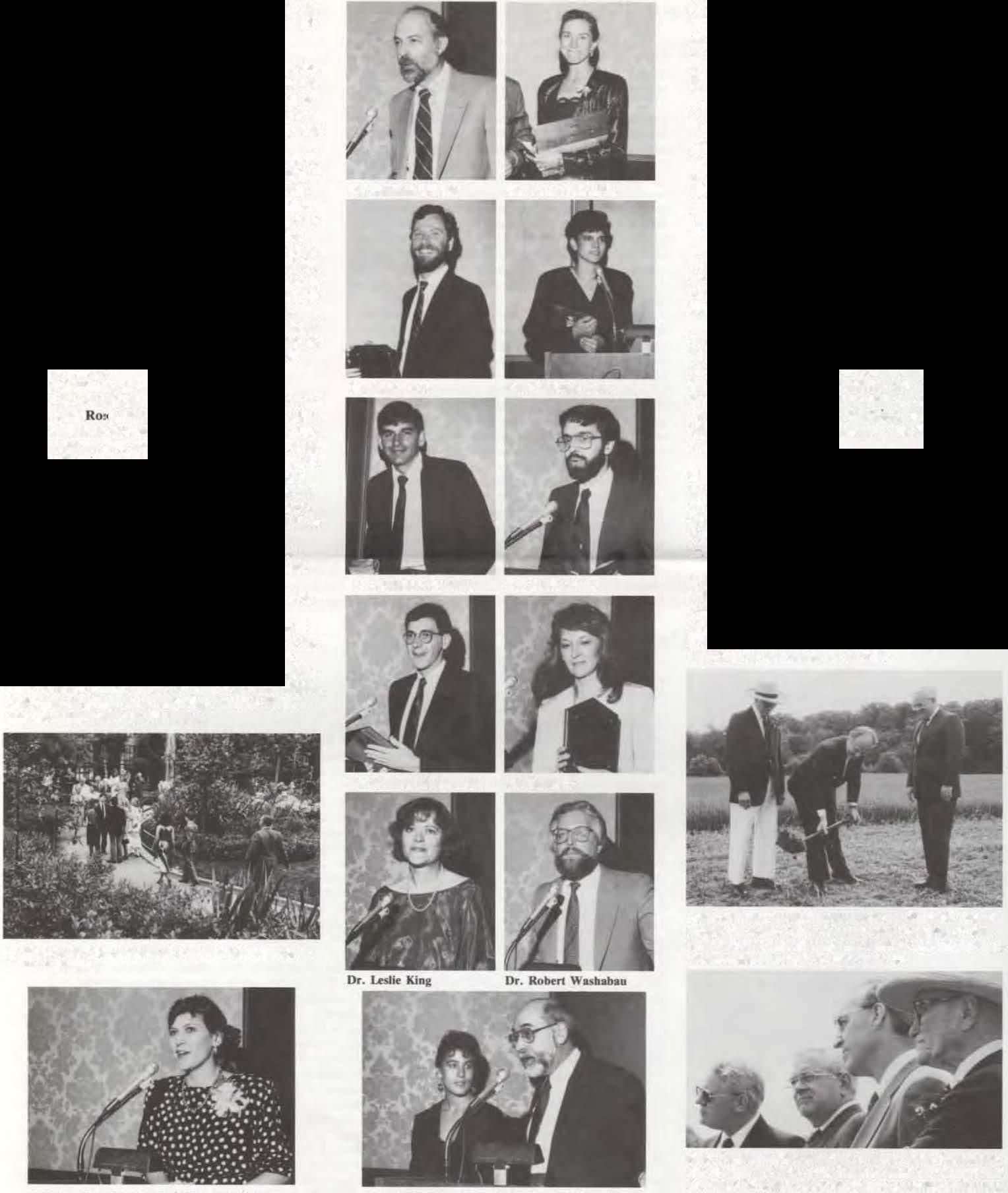
 Strollingl.ntbeConservatoryatLongwoodGardensprior cocbefestiviUe�.
Strollingl.ntbeConservatoryatLongwoodGardensprior cocbefestiviUe�.
TheCommencementExercisesforthe 10.1th graduatingclasstookplaceonMay14, 1990atthe ZellerbachTheatre.Thecommencementaddresswas givenbyDr. JaneGoodall,theworld-renowned naturalistandauthor.EarlierinthedaytheUniversitybadawardedDr.GoodallthedegreeofDoctor ofHumaneLetters, honoris causa.
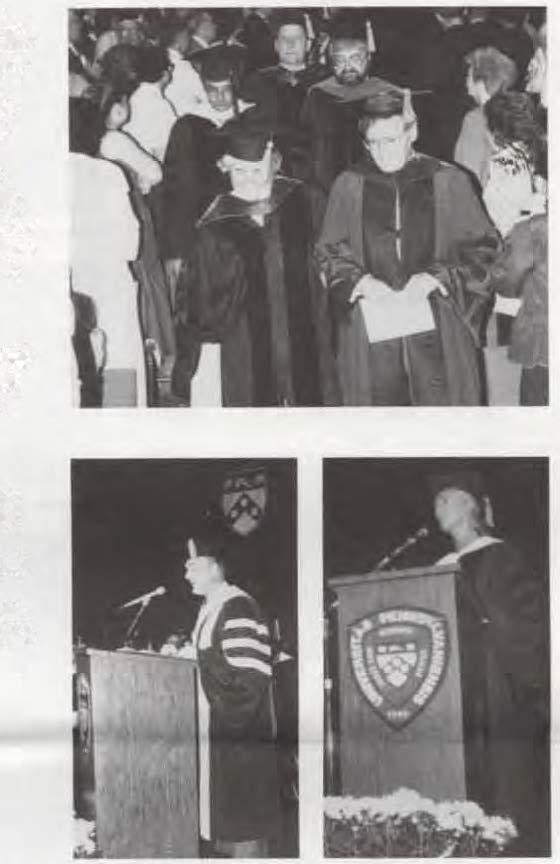
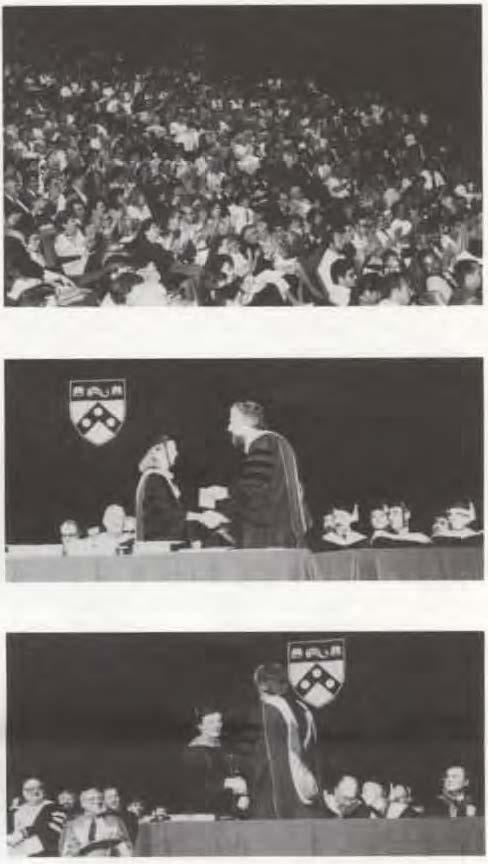
DeanEdwinJ. Andrews(V'61), assistedby AssistantDeanJeffrey A. Wonman(V'69).AssociateDeanCharlesD. Newton, and Mr.CharlesS. Wolf,cbainnan, VeterinarySchool BoardofOverseers,presentedthediplomastothemembersofthe Classof 1990.
Insteadofthecustomaryremarks,Class President JamesJ. CamiUkregaveanunusual address,areadingofDr.Seuss' newbookAllThe Places You'll Go. ThepresidentoftheVeterinary MedicalAlumniSociety, Dr.MichaelP.Ratner (V'59). thenpresentedtheClassFlagtoDr. Camilliere.
DeanAndrews, assistedbyDr. Robert1. Wasbabau(V'82),presentedawardsandprizestoa numberofgraduatesandrecogniudthosegraduatingwithhonor.
TheadministrationoftheVeterinarian'sOath byDr.CharlesKoenig(V'57), presidentofthe PennsylvaniaVeterinaryMedicalAssociation,concludedtheceremony.Everyonethengatheredfora receptionforthegraduatesandtheir families.
LeonardPetUSOOPriu
SusanJ.Holcombe
J.B.LippincottPrize
MariaH.Werkiser
1930ClassPrizeinSurgery
JuliaM.Heitzenrater
AuxiliarytotheAmerican VeterinaryMedictJI AssociationPrize
NicolePirkey
AuxiliarytothePennsylwmiaVeterinaryMedical AssocationPriu
MarlaH.Werkiser
1956ClassMedalforAchievemMIinPathology

AngelaE. Frimberger
JamesHazJittJonesPrizein BiochemisJry
AmyJ.Wenger MilmarkPrk,e
CraigH.Maretzkl
AmericanAnimalHospitalAssociationAward
LeanneM. Ksiazek
Men:*Awards
KerryE.Danielsen
AlisonBaldockRockar
GeorgeM.PalmerPrJ�
BruceN. Barnes
EveringhamPrizeforCardtology
DouglasA.Hambright
E.L.StubbsAwardinAvianMedicine
MarkS.Bridge
LargeAnimalSurgeryPrize
SusanJ.Holcombe
LargeAnimo!MedicinePrize
StaceyRomano
MorrisL.ZiskindPrizein�ineMedicme
JosephE.Thompson
MornsL.ZiskindPrizeinPublicHeolth
KarenF.Manin
HillAwardforNutrition
DonnaM.Dambach
QaigH.Maretz.k.i
PurinaMillsAwardinSwineMedicine
DouglasJ.Ayers
UpJOhnAwards
SusanJ.Holcombe
LaurenE.Strine
AuxiliarytotheStudentChapteroftheAmencan VeterinaryMedictJIAssociationPrize
Anne L.Crump
DouglasJohnAyers
EricTimothyBanks
NancyAnnDarin
BruceNormanBarnes
AnitaSusanBeoscboter-Holt
AllenWilsonBower
BlanaBraz
MarkStephenBridge
Lauren ReddingBrinster
TracyAnnBuclcwalter
MarthaEmmaBugbee•
KayannElizabethBusshaus
JamesJosephCamilliere
LaurenJaneca.rduJJo
CarolAnnConnor
AnneLouiseOump
JoyceAnnDaily
MagdaLynnD'Alessandro
DonnaMarinaDambach
KerryElizabethDanielsen•••
KathleenDeGraw••
LillianElizabethDuda•
MaryJaneFassinger
ChristopherJohnFazio
RobenDonaldFetterman
PamelaJoanSortonFlesher
AmyLynneFoehner
DarrylVincentFrancomacaro•
AngelaEricaFrimberger•••
MargaretMaryGarvey
SusanLeeGaut
RitaMariaGeigel
JudithAnnGlogau
JohnTrichGoos.s
AmyLynnGrice
GwynMicheleGroman
DouglasAndrewHambright
TalHarpa.t
KirkAndrewHassinger

JuliaMarieHeitzenrater ...
Karen BarbaraHoffman
SusanJaneHolcombe••
FriedaMadoraHottenstine
IndiaHelenlmperatore
TimothyJamesIreland
KatrinaSheryoeJackson
MichdeAnnetteK.all.ish
GeorgeBruceKeech,Jr.
DeborahAnneKelly
Lester Hoe-AunKhoo
KennethRobenKimmel
CarolBethKleinman
LeanneMarieKsiazek••
CelesteClareKunz
JohnEarlLedoux
CbelsieWallaceLevilJUJ...
KimberlyAnnLoGiudice••
CraigHenryMaretzld
KarenFayeMartin
MargaretJaneMcVeigh
AmyLynneMendelson
JacquelineHarrisonMenninger
StevenDanielMilden
JanetBottomleyMitchell
KarenMarieMockler
MichaelRobertMoyer
Man'betbSchanelyMurphy
PetraGwenNutz
CecilleAnneO'Brien
JudithEdnaPalm
CharlesReedPerkins
ThomasMichaelPickard
CaroleLynnPieretti-Castro
NicolePirkey•
KathrynLynnPoteet
AliceLanierRand
LawrenceAnthonyRebbeccbi,Jr.
AlisonBaldockRockar
StaceyRomaiJo
KristinRothermel
JamesPatrickRowanill
MichelleKathrynSabol
ThomasSchermerhorn
MichelleGailSchessler
CarolineRuthScibetta
MarianSiegel
NicholasEmmanuelSitinas
AlanCurrieStader
MarkAndrewSteekroat
LaurenElizabethStrine••
EileenVeronicaTaylor
JosephEarleThompson
RoseMarieTbreatte
JeffreyToll
JosephineAnneVecchione
PeterLewisVogel
PatriciaCarolWalters
BethUldalWeiner
NancyDaleWeintrob
CherylAnnWelch
AmyJaneWenger•
MariaHassink Werldser•••
JosephGerardWilliamson
NancyAnnWinning
JanetZiebur
Kim MarieZorbaugh
•••SummaCUmLaude
••MagnaCUmLaude
•Cuml...alJde
AlumniDayonMay12drewalmost200people to the Philadelphia campus. In the morning the official businessofthe Veterinary Medical Alumni Societywasconducted andtheAlumniAwardsof Meritwerepresented. Dr. Max J. Herman, V'59, passed thegavel oftheofficeofpresident toDr. MichaelP.Ratner.V'59,andintroducedtheofficers and membersoftheboard. Theyare:

Dr. Michael P. Ratner, V'59, President
Dr. Jack Bregman, V'66, President-Elect & Vice Chair, Uaison Committee
Dr. Max J. Herman, V'59, Past President; Chair, Awards&NominatingCommittees
Or. Daniel D. Bleicher, V'53, Benjamin Franklin SocietyChair&PhonathonCo-Chair
Dr. Malcolm Borthwick, Jr., V'69
Dr. PierreA. Conti, V'60
Dr. Richard D. Derstine, V'57
Dr. Harriet A. Doolittle, V'61, Farm Show Chair
Dr.GeorgeL.Hartensteinrv,V'68,Liaison·NBC
Dr. Sidney L. Mellman, V'49
Or. Donald R. Shields, V'63, AnnualGiving Co-Chair& PhonathonCo-Chair
Dr. Joseph D. Slick, V'53, LongRangePlanning Chair
Dr. Robert J. Tashjian, V'56, AnnualGiving Co-Chair& Phonathon Co-Chair
Dr. Alexandra Wetherill, V'80, OassAgentChair
Dr. M. Josephine Deubler, V'38, Historian
Dr. Darryl N. Biery,FacultyRepresentative
Dr. Charles Benson, Faculty Representative
Dr. Robert F. Moffatt, V'87, Pacesetters
Representative
HowardKrum,V'92,StudentGovernmentPresident
Janice DeRiso, V'91,Classof 1991 President
Roy Yaoong, V'92, Classof 1992 President
Nancy Katz, V'93, Class of 1993 President
Dr. Edwin J. Andrews, V'67, Dean NancyMartino, DirectorofAlumni Mfairs
Or. Charles W. Koenig, V'S7, P.V.M.A. President 1990

Dr. Earl H. Rippie, Jr., New JerseyV.M.A. President 1990
Dr. CarolineC. Hughes, V'80, Delaware V.M.A. President 1990
AfterLbemeeting,everyoneadjournedtolunch under the huge tent in thecourtyard and some "catchingup"withclassmatesandfacultymembers. Later in theafternoonmanyalumni andtheir families took advantageofthetourstothe Zoo, Philadelphia harbour and VHUP. lntheevening thefestivitiescontinued with a receptionandadinnerdanceattheSheratonSociety Hill Hotel in theheartofoldPhiladelphia. Mark yourcalendarsnowforAlumn iDay1991.Itwillbe on Saturday, May 18at New BoltonCenter.
Miniaturepotbelliedpigshavebecomeapopular (andexpensive)householdpet,seenfrequentlyon televisionandinthenewsmedia.Therearethree registries,anewsletterandevenabook, "The PamperedPig."
Theseminiaturepigsareabout 15"to19*tall andgenerallyweighfrom40to70pounds.They requirethesameveterinarycareasallswineandthe .>arnediseasesaffectallpigs,smallandlarge.
Ifyouareconsideringapigasapet,it's importantthatyou • 'piggyproof"hislivingarea.Itis saidthattheycandestroylawnsandopendoorsand closets.Anythingedible.particularlycommon bouseboldproductsandchemicals,m\1.\1.bestored outofreach.Miniaturepigchowisavailableand overfeedingshouldbeavoided.Pigscanbetrainedto useaUuerboxortoaskwhentbeywamtogoout. Theydobestifthetemperatureisabove60F.Heat lampsorpadsmaybeneededifthetemperatureis anylower.Inhotweather,shadeandplentyofwater areneeded.Asmallwadingpoolisasuggestion-pigs canswim.
Contactaveterinariannearyoubeforeyou bringapighomeasapet. F'tndandmeetyour veterinarianbeforeyouneedhelp.Also,checklocal regulationsaboutkeepinglivestock.
Formanyyears,pigshavebeenhouseholdpets. Aminiaturepigwithitsharnessandleashissureto attractattention.Theycanbekeptinacityapanment.Withpropercare,theirLifeexpectancyisabout fifteenyears.Besureyouunderstandallthatis necessarytokeepthepigwellandhappy.Give carefulconsiderationastowhetnerornotitwillfit intoyourlifestyle.
In 1989,therewere1,257,700dogsregistered withtheAmericanKennelClub.Therewereovera milliondogsregisteredeveryyearinthe1980's.The topfivebreedswerethesamein 1988and 1989cockerspanielsfirst,foUowed byLabradorretrievers.poodles,goldenretrieversandGerman shepherddogs.Rottweilersandcbowchowscontinue atthetopofthechan,ranking6thand7thinJ989. Dachshunds,beaglesand.min.iamreschnauzersare theothersinthe..TopTen."
Thereare130breedsregisteredbytheAKC.The listendswith lbizanhounds,Pharoahhounds, wirehairedpointinggriffons,clumberspaniels.field spaniels,Sussexspaniels.Englishfoxhounds,otterhounds.Americanfoxhoundsandharriers.
Moresportingbreedsareregisteredthanother groups.Theyare followedbynon-sporting,toy, working,herding,boundandterriergroups.
ItbasbeenestimatedthatthereareS2Amillion dogsintheUnitedStatesand 54.5 miltioncats. However,morehouseholdsowndogs.Regardless, it'squiteevidentthatdogsandcatsarefmnly establi,hedaspartofourlifestyles. Inthefaceof increasinganti-doglegislation,responsibledog ownershiplSessential. Don'tselectabreedjust becauseitispopular. Lookatadultsaswellas puppies.Considerhowmucbgroomingandtraining willberequired.TrytopickabreedthatwjlJbea memberofyourfamilyforitslifetime.Giveit enougbtrainingtomakeitacaninegoodcitizen. Unfortunately,animalsheltersreceiveaboutasmany purebredsasmixedbreedswhichhavebeen"rejected.,•Don'tcontributetothecanineoverpopulation problem.
LimitedRegistrationmayberequestedbythe owneroftheUtteratbirth.Theregistrationcertificateforsuchadogcarriesnoticeofthisllinitation andanyoffspringcannotberegisteredwithAKC. Also,t.hedogmaynotbeenteredinbreedcompetitionatachampionshipdogshow.ltmay,however, beenteredinObedienceTrialsandTrackingTests,as wellasinlicensedFieldTrialandHuntingTests.
Seriousbreedersareconcernedaboutindiscriminatebreedingandworktowardimprovingbreed characteristicsandeliminatinginheriteddefects. Littersaregradedandsomeindividualsareselected forshowingandbreedingwhileothersareconsidered moresuitableascompanions.Puppypurchaserswho havedecidedonaparticularbreed usually want "papers"asprooforthepuppy'sbackground. Limitedregistrationwouldbeusedforthese companiondogs.lf,asthepuppymatures,itcanbe consideredashowprospect,theownerofthelitterat birthmayapplytoAKCforremovalofthe limitation.
Mostbreedersculllitters.Thismaymean euthanizi.ngpuppieswithdefonni tiesortoreducethe sizeoftheliuer.TherewiUbepuppiesthatare cons1derednotquitegoodenoughtobeshowand breedingquality.Thesearetheeompanionstbatare candidatesforlimitedregiStration.Thisgivesthenew ownersassurancethattheyaregettingpurebred animalsthatar�nottheproductofhapbaz.ard commercialoperation.Excepttoanexpert, these dogsaregoodexamplesoftheirbreed.
Fleasserveasintermediatehostofthecommon parasiteofdogsandcats,Dipylidiumcaninum.This tapewormaJsoisfoundinmanyothercarnivores (foxes,byenas,junglecats,etc.)anditsdistnoution isworldwide.Theparasitecanbetransmittedto humans-mostreportedcasesareinyoungchildren.
Theinfcx:tionisdiagnosedbyfindingproglottids (tapewormsegments)inthestool.Motilesegments maybeseenonthehaircoatorbeddingordried segmentswhichresemblericegrainsmaybenoticed. Afreshstoolsamplemaybecoveredwithmotile proglottidswhichaawlaway-theymaynotbeseen inthesamplepresentedLOtheveterinarian.

lndogs, themostcommonlynotedsignis irritationcausedbypassageofthesegments, includingconstantrubbingoftheperianalareaand scooting.Usuallytheadulttapewormsintheintestinalrractproducenosignsunlesstheyarepresentin largenumbers.
Anadulttapewormmaybeupto70em. in length.Thecolexorholdfastisattachedtothe mucosaofthesmallintestinewith 100ormore segments.Thesegmentsmaybepassedwhilethe beadremainsattached.Gravidsegmentscontaining eggpacketspassoutwiththefeces.Eggsareeatenby flealarvaeandcompletetheirdevelopmentinthe adultflea.Whenthefleaiseatenbythedogorother host, theadulttapewormdevelops.
Onedrugofchoicefortreatmentispraziquantel whichcausesthetapewormtodetachanddisintegrateintheintestine.Thisdrugrequiresaprescription.However,thecontroloffleasisimportantto preventreinfectionwhichresultsinwhattheowner mayconsidertreatment failure.
Fleacontrol requirestreatingboththeanimal anditsenvironment.Consultyourveterinarianabout
this.Thoroughcleaningoflivingquartersisessen· tiaJ.Vacuumcleaninghelpsdisruptthelifecycleof theflea,butchangethebagfrequently-anadultflea maylivemorethanayear.CompJeteeradicationmay beimpossiblebutregulartreatmentoftheanimal, houseandyardwillhelp.
Hypothyroidism(reducedactivityofthethyroid gland)isdifficulttodiagnoseaccurately.Theuseand interpretationofthyroidfunctJontestsissomewhat controversial.Clinicalsignsincludeabnormalitiesof theskinandhaircoat.Hairlosswithoutitching usuallyoccurs.Desiccatedthyroidandsynthetic preparationsareusedfortreatment. Mostaffected dogsshowimprovementafteraboutamonthorsix week.s.hisreponedthattheuseofthyroidhormone resultsinnairregrowthinsomenootbyroidal diseases.
Thediseaseisreportedmorefrequentlyin cert.ainbreedsofdogsandmostcasesoccurinadults. Reproductiveproblemsareanothersignofhypothyroidism.Theseincludeabsentorabnormalheat periodsalongwithreducedconceptionrates.Wejght gainandchangesinbehaviormaybenoticed.
Thecaninepressrecentlybashadnumerous articlesabout thepossibilityofinheritedthyroid deficiencyanditsrelationshiptoadepressedimmune system.Thisraisesthequestionofwhetherornotan animalwithaconfirmeddiagnosisofhypothyroid· ismshouldbeusedforbreeding.
Manyofthesignsassociatedwiththyroid deficiencymayoccurinotherd.iseases lfthe conditionhasbeendiagnosedcorrectly.treatment mayberequiredforalifetime.
lntheSpotlight, AGuidetoShowingPedigreed andHouseholdPetCats.byCarolynM.Vellaand JonnJ. McGonagle, Jr. HowellBook House,866 ThirdAvenue,NewYork,NY 10022. $19.95.
ThisbookcoversaDyouneedtoknowifyouare interestedinshowingyourcat.Thereisinformation aboutthemajorcalfederationswhichregistercats andsanctioncatshows.ThesearetheAmericanCat Fanciers'Association(ACFA),CatFanciersAssociation(CFA),CatFanciers'Federation(CFF)and ThelntemationalCatAssociation(TfCA).Each federationhasaStandardofPerfectionforthe breedsitrecognizesandmakesitsownrulesgoverningactivities.Catsmayhavetitlesfromeach federation.Completeinformationisgivenabout registeringcatsandenteringsllows.

Preparationandgroomingforashowisclearly explained. Bathinganddrying thecat,cleaningthe ears, removingtearstainsfromtheeyes,tooth cleaning,clipping,combingandbrushingarediscussed Importantremindersincludeneverusingany productthathasnotbeenmadespecificallyforcats andneverusingbleachorhairdye;thisisnot condonedbyanycatfederation.
Showawardsareexplainedandlhereisan excellentglossary.AJGttenisundereightmonthsold andarleastfourmonthsoldthedayoftheshow.A HouseholdPetisanon-pedigreedcatusualJyrequiredtobealteredbyacenainage.Premierrefers toalteredcats
Atashow,catsincompetitionarecagedinthe judgingring.Theownerstaysatringsideandthe judgehandlesandplacesthecats.ratinglhemagainst theStandard ofPerfectionforthebreed.
Thisisagoodreferencebookforanycat fancier,spectatororexhibitor.


Dr. Darryl N. Bfery. professorofradiologyand Chief,DepartmentofClinjcaJStudies(Philadelphaa),wasawardedtheDtstinguishedAlumnus AwardbyTheAnimalMedicalCenter,NewYork.
ThefirstDr.MorrisL.ZiskindPrizewasawardedto Cynthja DiBuono(V'92).Theprizeisgiventothe studentwiththehighestcombinedgradeinPoultry Medicine,Epidemiolog-y,andVeterinaryPublic Health.
Oelli.seM.Atkinson(V'93)wasoneof27veterinary studentsfromtheU.S.andCanadatoreceivea1990 LAMSVeterinaryScholarship.Thescholarshipsare awardedtopromoteexcellencemtheveterinary field.Participantswererequiredtowriteanessayon "CanineColitis:Etiology. DiagnosisandClinical Management.''
Or. Nancy0. Brown(V'73)waspresentedthe PractitionerResearchAwardbytheAVMAatthe Association'sannualmeetinginSanAntonio,TX. Theawardisgivenannuallytoapracticingveterinarianinrecognitionofoutstandingaccomplishmentsinveterinarymedicalresearch.
Dr.JamesG.Fox,adjunctprofessorofcomparative medacine,receivedthe 13thCharlesRiverPrize whichispresentedbytheCharlesRiverFoundation toaveterinarianselectedbytheAVMAinrecognitionofdistinguishedcontributionstothefieldof laboratoryanimalscience.
Dr.RicbardA.McFee�)(V'61),professorofanimal reproduction,hasbeenappointedgeneralcampaign managerandvicepresidentofthecampaignforthe 1990-91 KennettAreaUnitedFundDrive.
Or. Suzanne R. Jenkins(V'66)waselectedtothe AVMACouncilofPublicHealthandRegulatory Affairs.
Dean EdwinJ. Andrews (V'67) hasbeenelectedto theAVMACouncilonResearch.Hewasalsoelected president-electoftheAssociationofAmericanVeterinaryColleges.DeanAndrewsparticipatedinthe EleventhSymposiumonVeterinaryMedicalEducaliooatAuburnUniversityinJune.Hewasconvener fortheworkshop"FacultyResearch."TheCollege ofPhyr.iciansofPhiladelphiaelectedDr.Andrewsa FellowoftheCollege.
Or. SherbynOstrich(V'63)basbeenappointed presidentoftheAVMAFoundation.
Or.Gerhard SchAd, professorofparasitology,has beeninvitedtoparticipateinaSEAMEOTROPMEDSeminar,heldin NovemberinChiang Maj,1nailand. The loptc of thethree-dayseminar willbe"EmergingProblemsinFood-BorneParasite Zoonosis:Impact on Agricultureand Public Health.''
Dr.JanetRemetta(V'85)hasbeenelectedtoservea secondtermaschairperson-electoftheNewJersey HealthProductsCouncil.TheCouncilisastatewide nonprofitinformatiOnandpublicaffairsagency composedofNewJersey'smajorresearch-oriented health productscompanies
Dr. Robert A. Cook (V'80) wasappointedchief vetennarianoftheNewYorkZoologjcalSociety.
RogerCaras,amemberoftheSchool'sBoardof Overseers,wonanEmmyawardforhis20120 segmentonwildhorses.
ll BelJwethu
Dr.UrsGigerwaspromotedtoassociateprofessorof medicineandmedicalgeneticsinClinicalStudies (Philadelphia).TheDevonRexCongressrecently honoredDr.Gigerforhisresearchworkonneonatal isoerythrolosisandspasticity.Theorganizationpresentedhimthe"1990RandyAward,"whichisgiven annuallytoanindividualororganizationcontnnutingtothebettermentoftheDevonRex breed.
Or. Edwin A. CburchUJ (V'41)receivedaDistinguishedLifeMemberawardfromtheAmerican Association ofEquine Practitioner:., thehigh�l honorbestowedbytheAssociation. Dr.Churchill servedaspresidentoftheAAEPin1958andwasa memberoftheorganization'sexecutiveboard. He hasbeenanactivememberoftheAAEPfor34years andwasrecognizedforhisoutstandingservicetothe Associaliooanddedicationtothe veterinaryprofession.
AttherecentACVlMmeetinginWashington,DC, Or.JorgBucbelerreceivedtheSmith-Kline-Beacbam residentawardforthispresentationentitled"TransfusionofAandBbloodincats."Dr.Buchelerhas beentheTransfusionMedicineFellowforthepast year.
Dr.LeslieDierauf(V'74)hasbeenawardedthethird AVMACongressionalFellowship. Dr. Dieraufwill beginherfellowshipwithanorientationatthe AmericanAssociationfortheAdvancementof ScienceinSeptember.Then,shewiUinterviewfor positionsinCongressionaloffices.
Dr. EdwardBaker(V'48)isthe author of Small AnimalAllergy: A Practical Guide. Thebookwas publishedbyLeaandFebiger.
Dr.RobertR.Marshak,professorofmedicine,was inducted intotheNationalAcademyofSciences• InstituteofMedicine.
Dr.JoanHendricks(V'79)hasbeenpromotedto associateprofessorofrnedjcine. Dr. Michael Goldschmidt hasbeenpromotedtoprofessorof pathologyinpathobiology.Dr.W'tlliamA. Moyu hasbeenpromotedtoprofessorofsportsmedicinein ClinicalStudies(NBC).
Dr. CharlesCurtis hasbeenappointedasststartt professorofepidemiologyInClinicalStudjes(NBC), andDr. PhillipScottbasbeenappointedassistant professorofparasitologyInthedepartmentof pathobiology.
The foUowingfacultymemberswerereappointed: Dr. DavidT.Galligan(V'81) as assistant professor ofanimalhealtheconomicsinClinicalStudies (NBC);Dr.RaymondW.Sweeney(V•82)asassistant professorofmedicineinClinicalStudies(NBC);and Dr. ElaineWatsonasassistantprofessorofreproductioninClinicalStudies(NBC).
Or. MichAel S. Miller(V'79)hasco-authoredthe CardiologyPocket Rtiferencepublishedbythe AmericanAnimalHospjtaJAssociation. Hegavea seriesofcardiologylectures at the t990AAHA annualmeetingandAcademyofVeterinaryCardiologymeetinginSanFrancisco.Dr. Milleris co-authoringthechapteronCardiacElectrophysiologyintheupcomingeditionofDuke's PhysiologywithDr.DavidDetwdlu(V'42)andDr. LarryTilley. Dr.Millerisvicepresidentandboard memberofCardiopet,Inc.
ThenewinternsandresidentsatVHUPand NewBoltonCenterhailnotonlyfromrheU.S.and Canada butalsofromoverseas.
TheinternsatVHUPare: Dr. BethAnn Brockman,UniversityofIllinois, '90; Dr.Ann Crump(V'90),Dr.KarenMarieFideJI,Michigan State University, '90; Dr. JulieM. Heitzenrater (V'90);Dr.DerekHughes,UniversityofLiverpool, '90;Dr.JooadtanPer�.KoretSchoolofVeterinary Medicine,'89;Dr. JiU L. Robson, Universityof Liverpool,'89;Dr.CarlD.Sammarco,Universityof Liverpool, '89; DJ. LaurenE.Stduc:(V'90); Dr. PatriciaC.Walters(V'90);andDr.CarolineJ.Zeiss, UniversityofPretoria,'90.
ThenewresidentsatVHUPare: in laboratory animal medicine,Dr.JoanCole,PurdueUniversity, '77;Dr.LarryHandt.MichiganStateUruversity,'87; Dr.NormanC.Peterson,Universityoflllinois,'89;in .!turgery.Dr.DanielM.Brehm(V'89);Dr.CatherineA. Popovitch,UniversityofGuelph, '89;inveterinary dentistry,Dr.PaulG. Orsini,N.Y.StateVeterinary School/Cornell,'82;inemergencymedicine,Dr.Nishi Dhupa.UniversityofNairobi,'86;Dr.RobenMoreau. UruvemtyofCalifornia-Davis,'85;mradiology,Dr. PamelaA.Green,OhioStateUniversity,'88;Dr.Rosa Mendez-Anguilar, UniversityofMexico,'81; insmall animal medicine, Dr.OnistiaanJohannesOelens, UniversityofUtrecht,'85;Dr.AlanR.Klag,UniversityofMontreal, '87;incardiology,Dr.Maribe\h Bossbaly(V'88).
AtNewBoltonDr.AlisonBaldock(V'90)isan mteminfieldservice.Dr.AbbyMaxson(V'87)andDr. LauraReilly(V'89)areresidell1Sinmedicine.Dr. ElizabethLaws,TuftsUniversity,'89andDr.Eric Parente,NewYorkStateUniversity/Cornell,'89are residentsinsurgery.Dr.PaulKerns(V'79)isthenew residentinavianmedicineandpathology.Dr.Celeste BoatwrightandDr.ForrestRossRicharejunior surgeryclioiciaru.
Dr.WolfgangKaehnisavisitingprofessorInlarge animal reproductionfromtheUniversityofMunich. Hisprimaryinterestisneonatalmedicineandheishere toworkinthenewneonatalwritat NBC.
Dr. MonikaGriot-Went fromtheUniversityof BerneisthenewfdlowinDr.Giger'sNIH-funded TrarufusionMecficineAcademicAwardProgram.
Mrs.JackL.Billhardthasestablishedtwoterm dean'sscholarshipswhichwillbefundedforfive years.TheMrs. Jack l.BillhardtTermDean's ScholarsincreasethenumberofDean'sScholarsat theSchoolto1welve.
MargaretLackeyistherecipientofascholarship fromtheTyCobbEducationalFoundation.TheDog Writers'EducationalTrustawardedascholarsbipto SusanM.Spilker.TheNewJerseyVeterinaryEducationFoundationawardedfiveindividualscholarship grantstoswdentshere.Therecipientsare:MaryLou Ciccone, Robin Pollen, KennethTurner, Pamela Bendock,andTiffanyBogart.ChristopherSmithis therecipientofascholarshipawardedbytheSouth WindsorCollegeScholarshipOrganizalion, achapterofTheCitizensScholarshipFoundation,South Windsor,Cf. TheClarkFoundationawardeda scholarshiptoNaoeyLeePugh.NataUeN.Danielsis therecipientofascholarshipawardedbythePocono MountainKennel Club.SomersetNewspapers, Inc. hasawardedascholarshiptoLoriBason.
TheeventsinthePersianGulfinAugustwerea dramaticreminderthatweinhabitanunpredictable and, sometimes politically unstable, world. These events,comingontheheelsofthechangesinEastern Europeand theSoviet Union, thesavings and loan debacle, andtheenvironmentalaisis, forceus to pause, reflect. andwonderwhether anythingwill remainconstant.
Inthistimeofchange,weremindourselvesthat although ourworld isoften a difficult, tumultuous place. many strong anchorsex.ist thatprovidesustenance, solace, and hope. Forexample. in the Westernworld,forty-fourinstitutionsexistthatare moret.hart800)'earsold.Threeofthem-theBritish Parliament,theCatholicChurch,andthemonarchy ofDenmark-areobviouslysignificantentitiesboth historicallyand in thecontemporary world.
Theotherforty-<>neinstitutionsareooUegesand universities!Placesofscholarship,learning,exploration, debate, and sharing of ideas; placesof permanence.

TheUniversityofPennsylvaniaS<:hoolofVeterinaryMedicineisthesecondoldestexistingveterinary institutionin theUnited States. During its 106-yearhistory,itbasbeenadistinguishedcenterof teaching,research,andservice.AhhougbtheSchool doesnotyetapproachan800-yea.rhistory,itstrives tobe along-termactorand participant onthe constantlychanging stageofveterinary medicme.
Toachievea reputation forpermanence, substantial professional accomplishment, andrecognition asthe best requiresinvestment in people. The School is committed toattracting and retainingthe best peopletowork, teach, investigate, learn, and serve.ToconstantlyfuU"tllthisgoalrequirespartnershipsbetweenpeople.Whetherthesepannershipsare with corporations, foundations, or private persons, lheyultimatelydependon individuals who identify withthevisionfortheSchoolandgiveofthemselves for its future.
Thisrelationshiptakesmanyforms:Lhosewho providetheirtimeandenergyasvolunteerambassadors, advisors,andspokesmen;thosewhointroduce andeducatetheirfriendsandclientstotheSchool's mission; and thosewho contribute financial resourcesto fuel new achlevements.
A number ofindividualshavehelped advance the S<:hool through financial investments inpermanent,livingarrangementsthatsupportpeople.These legacies providescholarships, fellowships, program funds,andprofessorships;theyarecreatedthrough such vehicles as directcash or stock donations, bequests,charitabletrusts, giftsofrealestateorlife insurance, and other assets. The keyelementthat distinguishesthesegiftsisthedonor-'scommitmentto apermanentendowmentanddesiretobeassociated forever with the SchooL
Thedesires tobuild, to makea difference, to leaveanindeliblemarkofdistinction,togivelifetoa vision arethemotives fortheseextraordinary commitments.
Andtheseopportunitiesareavailableto everyone, individuals of any means, not just those fortunate to possessgreat wealth. TheSchool welcomesyourinteresttohelpbuildan800year-old nestegg,aninstitutionofpermanenceandachievement withinveterinarymedicine.
Formoreinformationabouthowyoucanhelp, pleasecalltheDevelopmentOfficeat(215)898�1480.
The21stAnnualSymposium,YourVeterinarian andYourDogs,willbeheldJanuary26, 1991atthe Veterinary Hospital oftheUniversity ofPennsylvania in Philadelphia.

Theday-longevent beginsat 9:30 a.m. and featuresfourspeakers.Dr.DonaldF.Pattersonwill discuss 'ControlofGenetic Ojseasesin the Dog." "CommonEyeProblemsImportanttoDogOwners andBreeders..wiDbethetopicofDr.StevenGross. Dr. David Holt will speakon "Gastric Dilatation Volvulus" and Ms. DonnaOakley will discussthe • 'TheBloodBankandtheBloodDonorProgram"at Penn's VeterinarySchool.

The$45feeincludeslunchandparking.Reservationsarerequiredandcanbemadebycontacting Dr. M. Josephine Deubler, VHUP, 3850Spruce Street,Philadelphia,PA19104Tel.:(215)898-8862.
Oct.30&0ct.31 Records -Tbe PulseofProduction Medicine New Bolton Center
Nov. 7&8 EquineEmergency Medicine New Bolton Center
Nov. 29 Endodontic Diseaseand Techniques VHUP
Jan. 9 SmallAnimalSpinal Neurosurgery VHUP
Jan. 23&24 Penn AnnualConference AdamsMarkHotel,Philadelphia
Feb. 13 SurgicalApproachestotheBonesandJointsofDogs VHUP
Feb. 20 Small Animal non-platingOrthopaedics Laboratory VHUP
Mar. 6 Small Animal Dermatology VHUP
Mar.20 ASpecial Presentation for Western Pennsylvania Practitioners:SmallAnimalOralandDentalDisease; LargeAnimal Oral and Dental Disease; Endodontic and Restorative Procedures;Surgeryofthe Upper Airway in the Horse. Meadville, PA
Foradditional information and registration appllcationspleasecontact tbeOfficeofContinuing Education,SchoolofVeterinaryMedicine,3800SpruceStreet,Philadelphia,PA19104,TeL:(215)898-1882.
TbeDopplerEchocardiUjp'aphyUnitatVBUPwasupgradedtoincludeColorDopplerEcboc:ardiograpby.Shownherear� Mr.BrunoTei'Tlll'iwlloStgifttotheScboo1madepossiblethiseahlocementoftheIUdliae,Dr.JamellW.Boclaaaan, professoruddudofca.rdloloty,DeanEdwinJ.Andrews,audDr.DavidKnigJtt,professorofurdJoJogy.Mr.Furarl madetbeaift tamemoryofILlsdog "Pe�" udtbeheart-shapedplaqueootheunitreads: •'EebOCIJ"dlograpby Ulllt dedicatedIamemoryof'Pepe' bybbbestfriendBrunoFerrari.BellwetberISpublishedbyth�SchoolofVeterinary MedicineattheUniversityofPennsylvania
Editor: HelmaW«ks
Writers: Dr.M.Josephirre Deubler(AnimalCrackers)
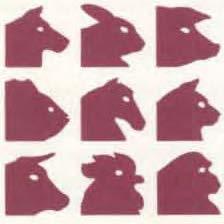
PhyllisHoi/Qnan
JanKangilaski
SusanPer/off
HelmaWeeks
Dlustrator: MarieGarofano
PlJotograpb«s: AdamGordon LynneR.Klunder AnthonyWood
NewBoltonLiaison: CatherineLarmore
We'dlik�tohearyourpraise,criticismsorcomments. Pleaseaddressyourcorrespondenceto:
HehuWedcs,UniversityofPennsylvania,Schoolof VeterinaryMedicine,3800SpruceStreet,Philadelphia, PAI9HH6010(215)898-U75.
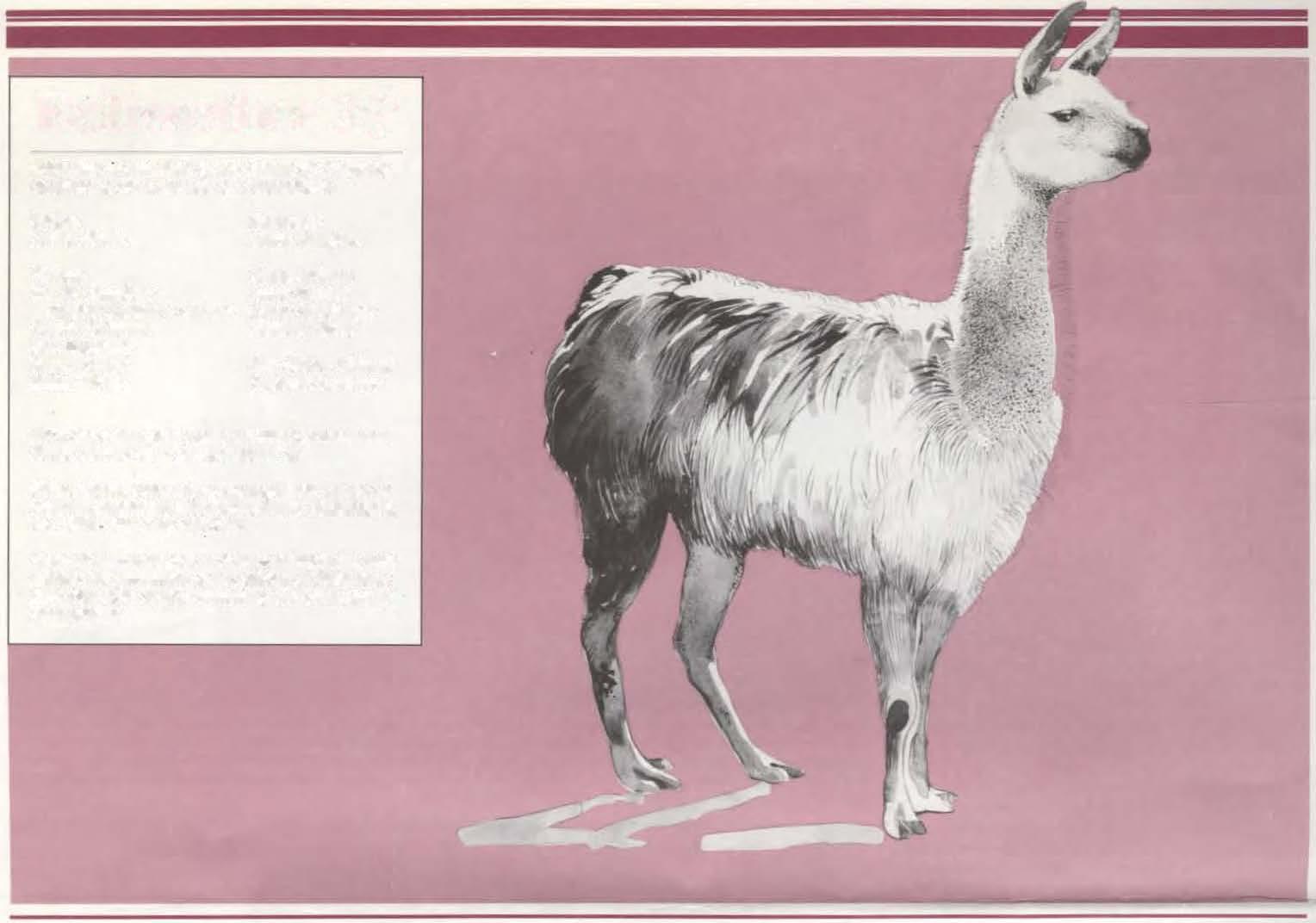
Noneoftheseartidesaretobereproducedinanyform withoutthepermissionoftMediiorsofBeUwether.
1990CopyrightbytheTrusteesoftheUni'l--ersi/yof PennsylWJnio.

University of Pennsylvania
School of Veterinary Medicine
3800 Spruce Street
Philadelphia, PA 19104-6008
Address correction requested